





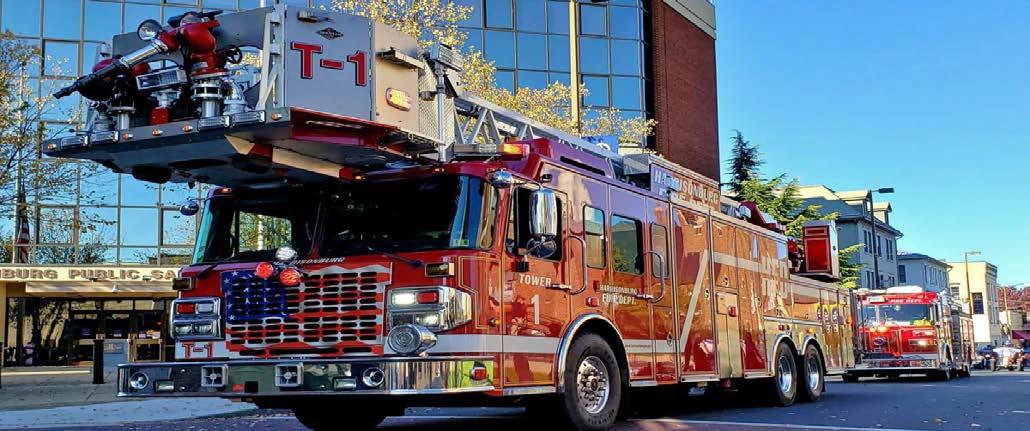
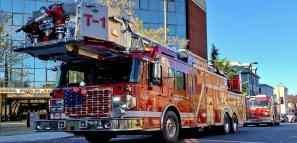

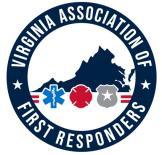
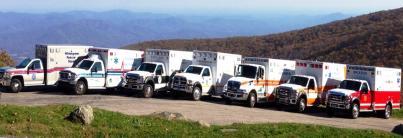
Course provided by the Virginia Department of Fire Programs and the Virginia Association of First Responders


◦ Minimum 18 years of age the first day of course
◦ Have any valid driver’s license
◦ Be affiliated or have pending affiliation with an Emergency Services Organization
4/4/2025
◦ Must attend 100% of the course
◦ Must successfully complete written examination with a score of 70% or above
◦ Must successfully complete practical skills evaluation (cone judgement course)
4/4/2025
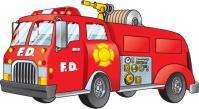

It is highly recommended that a student have prior driving experience in the vehicle type and classification in which they are attempting to gain certification.
◦ To acquaint the student with the theories and practices of emergency vehicle operations.
◦ Allow the student to demonstrate their skills in vehicle operations through the use of predetermined practical evolutions.
4/4/2025
It is designed to explain how emergency driving differs from non-emergency driving and to test the driving skills of the student. Completion also satisfies the minimum requirements for an operator of an emergency vehicle as defined by the Virginia Office of EMS. This course DOES NOT teach the student to drive and completing this course DOES NOT designate you as a driver in your agency.
4/4/2025
Class 1
◦ 0 – 10,000 pounds. Cars and small vehicles.
Class 2
◦ 10,001 – 26,000 pounds. Most ambulances and smaller fire apparatus.
Class 3
◦ 26,001 + pounds. Most large fire apparatus and heavy rescue vehicles.
4/4/2025
Class 4
◦ Tractor Drawn Apparatus - Aerial, Tanker / Tender, and Specialized Apparatus. All connections pivot over rear drive axles
Class 5
◦ Aircraft Rescue and Fire Fighting Apparatus (Vehicle Class only used by agencies operating this type of vehicle).
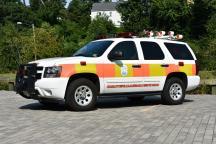




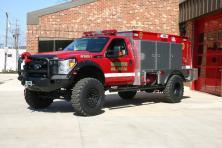

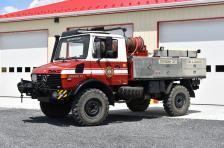
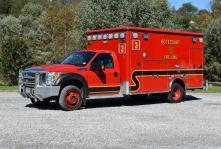


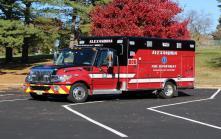

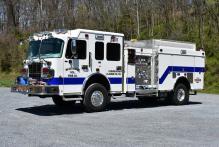

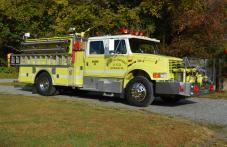


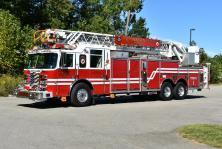
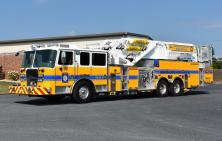
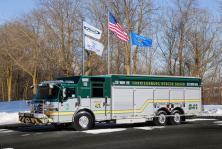
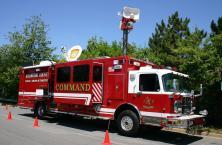


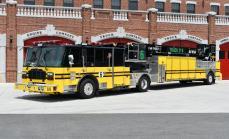

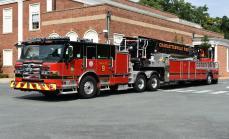
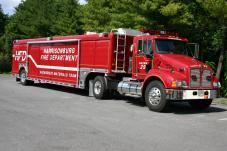
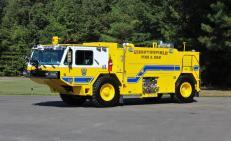


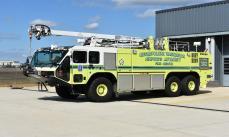
Skills
◦ Reading
◦ Writing
◦ Mechanical Physical Fitness
◦ Vision
◦ Hearing
◦ Disabilities
4/4/2025

◦ Often selected through promotions
◦ Often selected based on experience, training and certification requirements.
◦ Drivers must have desire and put forth an effort to learn

4/4/2025
◦
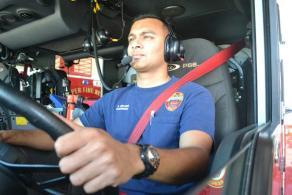
◦ Advanced behind-the-wheel driver training teaches drivers to drive more defensively.
◦ Trained operators can anticipate the actions of other drivers on the road and avoid situations that could cause a crash.
◦ Drivers learn to position themselves better in traffic, stopping and starting less often and causing less wear and tear on agency vehicles.
◦ Additionally, driver training can result in better fuel economy and lower overall maintenance costs.
4/4/2025
*Studies show that people without driver training experience are involved in 62% more crashes than those who have attended driver safety courses.
Such training can, for you, establish and maintain lower insurance costs, increase ability to avoid crashes, and lessen the degree of the crash should one occur.
*Source – US Fire Administration EMS Safety
4/4/2025
*Research has shown, approximately 95 percent of all 911 EMS calls ARE NOT true emergencies.
Of the rest, less than 3 percent turn out to be life-threatening or potentially life-threatening.
*Source –

4/4/2025
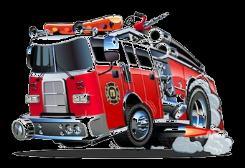
Public Relations Concern
You are your agency’s best or worst public relations agent.
The public views you more while you are driving than at any other time.
4/4/2025
Good Public Relations
◦ Safe driving displays professionalism and respect for the public
◦ Show courtesy
◦ Keep vehicles clean
◦ Initiate and maintain public information programs
4/4/2025
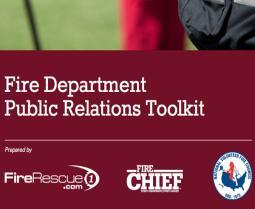
Bad Public Relations
Vehicle crashes involving emergency services vehicles may have serious consequences.
◦ Emergency efforts are delayed to the original scene
◦ A second emergency scene is created
◦ Vehicles and property may be damaged
◦ Potential for injuries to personnel and the public
◦ Public image of your department suffers
◦ Driver / Department may be subject in a lawsuit
4/4/2025
◦ Improper languages; gestures
◦ Unkempt appearance
◦ Driving recklessly

◦ Impatience in dealing with the public
4/4/2025
Defensive Driving
Driving to prevent crashes in spite of incorrect actions of others or adverse conditions.

“Distracted drivers make this more important than ever”
4/4/2025
◦ Proper hand positioning
◦ Legs slightly bent at knees
◦ Proper seat height
4/4/2025

Position and Use of Feet
Right Foot
◦ Placed squarely over accelerator
◦ Over brake only in anticipation of braking
Left Foot
◦ Never used for braking
◦ Rest on floorboard to assist with balance
4/4/2025
Position of Hands
Holding the wheel
◦ Firm grip with both hands
◦ Do not let wheel spin freely
◦ Do not palm the wheel

◦ Do not allow wheel to slide through hands
4/4/2025
Sit straight but relaxed and place your hands on the steering wheel. If your steering wheel were a clock, your hands should be at the 8 o’clock and 4 o’clock positions. Hold the wheel with your fingers and thumbs. Avoid gripping it with your palms. (pp 13-Virginia Driver’s Manual)

◦ Hands do not cross each other
◦ Both hands remain in contact with wheel
◦ Used for turns and for counter-steering
◦ Becomes more comfortable with practice
4/4/2025
Drivers need to utilize mirrors effectively!
◦ Adjustments
◦ Prior to moving vehicle
◦ Allow vision of side of vehicle and as much of lane as possible
◦ Use convex mirrors to get the “big picture”
4/4/2025
◦ Know location of your vehicle’s blind spots – each vehicle is different
◦ Compensate by using others to assist you
◦ When possible, use spotter(s) while backing
◦ Cameras may assist but may also be a distraction
◦ Blind spot warning indicators
4/4/2025
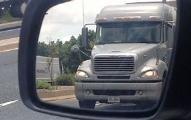
◦ Don’t “hang out” on either side of large vehicles.
◦ Don’t tailgate.
◦ Pass safely
◦ If you cannot see the driver in mirror, they can’t see you.

◦ Every driver must legally use signals to assist others in knowing what their intentions are.
◦ “Do Not” use hazard (four-way) flashers while moving – most turn signals do not operate while hazard flashers are on
◦ Fire apparatus and ambulances must be equipped with backup alarms.
◦ Sound horn prior to backing as an additional precaution.
4/4/2025
1-37
Only accomplished with right foot.
Gradual steady pressure on pedal.
Engine retarders or engine brakes help in vehicle control.
◦ Reduce excessive brake wear.
◦ Follow manufacturers recommendations for wet / slippery roads.
4/4/2025
1-38
Avoid locking-up brakes
◦ Requires a greater distance to stop
◦ Interferes with steering control
Most vehicles are equipped with Anti-Lock Braking Systems (ABS)
4/4/2025
Abrupt stops can cause injury, mechanical failure and skidding
Anti-Lock Brakes require a steady pressure applied to the pedal.
DO NOT “pump” the brake pedal on vehicles equipped with Anti-Lock Braking Systems!
4/4/2025
R.D. + B.D. = S.D.
Reaction Distance Braking Distance TOTAL STOPPING DISTANCE
Reaction Time = 3/4 Second
Braking Distance INCREASES with vehicle SIZE and SPEED


Braking Distance Estimates by Vehicle Size
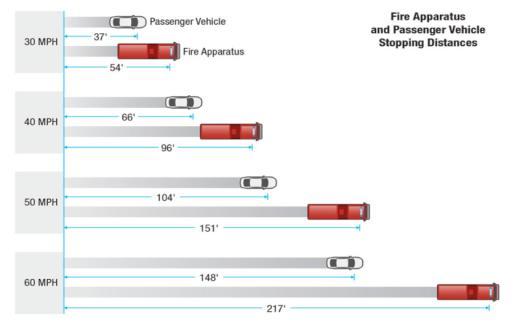
FOLLOWINGDISTANCE FORMULAUNDER NORMALCONDITIONS



SECOND RULE 1001, 1002, 1003


WHEN DRIVING LARGER VEHICLES YOU MUST INCREASE YOUR FOLLOWING DISTANCE! 1-43
Stopping Distance vs. 3 Second Rule Heavy Two-Axle Trucks
◦ Aim high in steering
◦ Get the big picture
◦ Keep eyes moving
◦ Allow an out
◦ Keep vehicle visible

4/4/2025
The Smith System states that following these five rules can dramatically reduce the risk of major accidents on highways and roads.
Aim High in Steering
The driver should focus their attention high –- VIEW THE WHOLE ROAD.
Get The Big Picture
“Be aware of your surroundings at all times”. Having the whole picture means that you are doing your part to keep your vehicle as safe as possible while moving 100 feet a second.
4/4/2025
Keep Your Eyes Moving
Remain alert consistent eye movement prevents your body from entering the trance state, keeping you alert to every driving condition ahead of you.
Allow An Out
Don’t let other drivers box you in while selecting their lanes. Always anticipate what choices other drivers make.
Keep Vehicle Visible
The final rule for the Smith System prevents accidents by removing assumptions made behind the wheel. As a driver, make sure that other drivers can see you and anticipate your move. If you feel you are coming into another driver’s blind spot, use the horn to get their attention.
4/4/2025
A five-step approach to safe driving behaviors
◦ Scan (Sense & Search)
◦ Identify
◦ Predict
◦ Decide
◦ Execute
4/4/2025
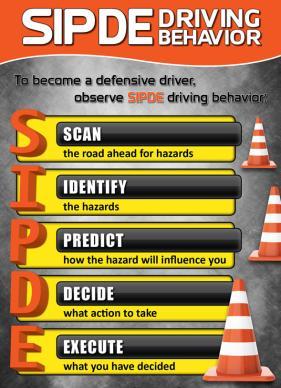
Usage specified by Virginia Motor Vehicle Code (used with “reasonable necessity”)
Be Aware that sudden usage behind a vehicle may startle the driver
Better response to sounds that change pitch often
Don’t rely on siren
4/4/2025
Short bursts of air horns and constant up and down siren oscillation most effective
Emergency vehicle operators must be aware of other emergency vehicles
◦ Difficulty in hearing sirens of other emergency vehicles
◦ Report approach to common intersections by radio 1-50
4/4/2025



Traffic normally moving at speeds equal to or greater than safe response speed
Vehicles stopping or trying to get out of the way can cause serious crashes and traffic jams
Evaluate the legal implications of not using siren
Safety of others in the vehicle is the driver’s responsibility
◦ Be fully dressed before getting on
◦ All riders should wear seat belts

◦ Shall be seated and not permitted to stand
◦ Riding on tailboard is UNSAFE and is NOT ACCEPTABLE
Patient Compartment:
◦ Always alert the driver when you are unbelted and providing patient care.
Supplemental Restraint Devices / Systems
◦ Air Bags
◦ Seat Belt Pre-Tensioners
4/4/2025

Securing Occupants and Equipment


4/4/2025
Everyone and everything restrained
Soft bags
Unnecessary

Seatbelts


Challenges
◦ No single position works for all patients
◦ Comfort issues
◦ Facing rearward
◦ Secure all straps / shoulder restraints
◦ Head elevated
◦ Medical equipment in use
◦ Limitations of equipment
4/4/2025


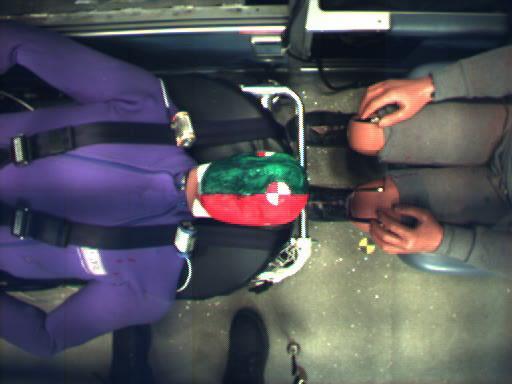
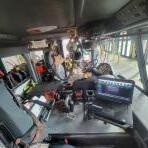
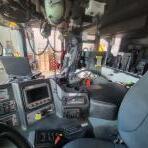
◦ PPE Gear
◦ Patient Belongings
◦ Medical Devices
◦ Personal / Firefighting Gear
◦ Wheelchairs
◦ Flight Team Equipment
4/4/2025
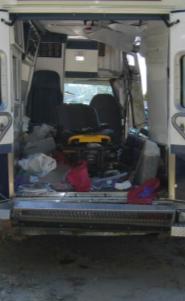
Final thought about securing everyone and everything
“First Responders must do a better job securing ourselves, patients and equipment. We often see the adverse results of others who don’t use seatbelts or child seats, so let’s set the standard.”
4/4/2025

The transportation system is made up of three (3) components:
•The Vehicle
•The Driver
•The Environment

4/4/2025


Daily Maintenance Checks
◦ Accomplished at the beginning of shift
◦ Approaching the vehicle
◦ Is the vehicle clean
◦ Is the vehicle sitting level
◦ Fluid leaks underneath
◦ Condition of glass and lights
◦ Tire condition
4/4/2025
Engine Compartment Checks
◦ Fluid checks – oil, power steering, cooling system, brake, transmission, windshield washer
◦ Batteries, hoses, and belts
◦ Refer to manufacturer’s recommendations
4/4/2025
Cab Compartment Components
◦ Controls and gauges
◦ Seat adjustment, mirror adjustment, and seat belts
◦ Equipment secure in cab
◦ Windshield clean
4/4/2025
System Checks
◦ Lights, gauges, wipers, radios
◦ Emergency equipment (lights, sirens, air horns, etc.)
4/4/2025
Equipment In Compartments
◦ Properly stored and secured
◦ Cleanliness
◦ Proper working order
4/4/2025
Road Check
◦ Steering
◦ Transmission
◦ Brakes and suspension
◦ Document all defects and/or needed repairs
4/4/2025
Vehicle Maintenance –Weekly / Monthly
Same as daily but with greater detail – checks of all components and inventory
Check undercarriage for leaks and/or loose connections
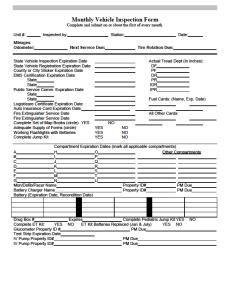
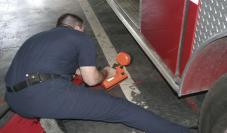
Vehicle Dynamics

Vehicle Size


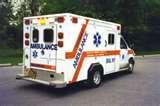


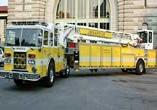
4/4/2025
Vehicle Dynamics Weight and Height
◦ Vehicle dynamics change as weight and height changes
◦ Four-wheel drive vehicles
Common Causes of Weight Transfer
◦ Drivers must become familiar with the normal handling characteristics of their vehicles
4/4/2025
Follow manufacturers recommendations for starting, driving, and operating emergency vehicles.
Driver should review incident location, response route, and other pertinent factors prior to responding.
GPS usage and directional adjuncts
Ensure all personnel are dressed and seated with seat belts on prior to moving.
4/4/2025
Drivers must become familiar with normal operating and gauge readings associated with each vehicle.
◦ Drivers must be thoroughly familiar with operator’s manual and consult them for permissible limits when in doubt.
Engine shutdown should never be made immediately after full-load operation.
◦ Allow hot engine to idle until cool. Do not race engine prior to shutdown. Turbochargers must cool or severe engine damage will result.
4/4/2025
The most important factor that you control in emergency vehicle operations is Driver Attitude!
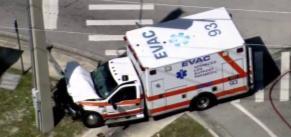
The number one cause of vehicle crashes is Driver Error or Driver Inattention.
4/4/2025
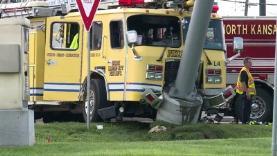
Pitfalls
◦Overconfidence
◦False ideas
◦Impatience
◦Tension
◦Exhibitionist
◦“Road Rage”
4/4/2025
Professionalism
◦Maturity
◦Responsibility
◦Courtesy
◦Desire
◦Restraint
Human aspects we can control
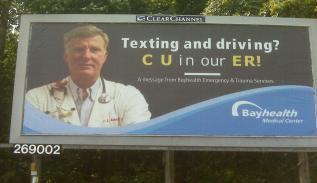

4/4/2025
Visual
Auditory
Biomechanical
Cognitive
◦ Text Messaging
◦ “Protective” Distractions
4/4/2025
Things that take your eyes off the road
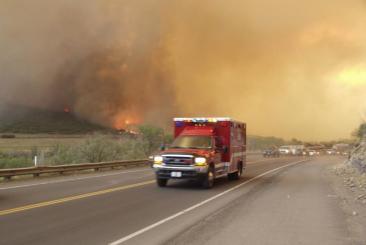
Sounds that attract your attention and your eyes off the roadway



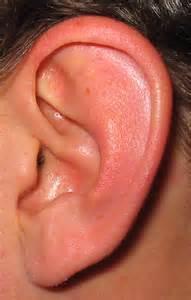
Things that take your hands off the wheel

Thoughts that take your mind off the road



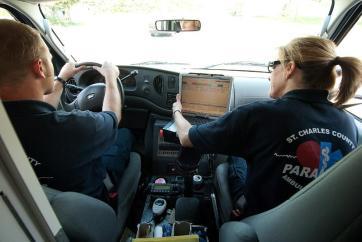
Text Messaging


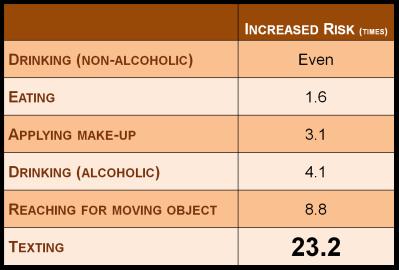
4/4/2025
Some improve safety – Example “Clear Right.”
Car coming out of driveway on the right. You got it?



Effects of Fatigue
◦ Slowed motor skills
◦ Delayed reaction time
◦ Poor concentration
◦ Bad judgement
◦ Blurred vision
◦ Driving too slowly or fast
◦ Driving across lanes
◦ Rolling stops
◦ Agitation and /or impatience with other drivers.
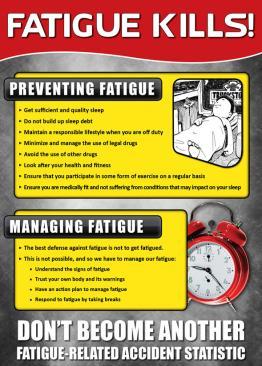
Operation of an emergency vehicle often involves high speeds, driver stress, and danger to life and/or property.
Driving under emergency conditions requires extra sensitive judgment and refined driving skills.
4/4/2025

Personal habits – behavior patterns developed through repetition
Knowledge
Judgment
Stress and reaction to stress
Experience – continued practice of good driving habits on which the driver can rely
4/4/2025
Substance Abuse – commonly seen in high stress positions
◦ Researchers estimate that between the hours of 10 PM and 2 AM three out of every ten drivers are drunk.
◦ Nearly 50 percent of the drivers arrested for DUI are social to moderate drinkers. Don’t think that it won’t happen to you.
◦ Coffee does not speed up the elimination of alcohol and/or other substances from the body
4/4/2025
Visual Perceptions

90% - 95% of all incoming data is obtained through VISION!
4/4/2025
Visual Perceptions
◦ Eyesight
◦ Glare recovery
◦ Depth perception
◦ Peripheral vision
4/4/2025


Physiological Aspects
Visual Perceptions
◦ “Moth Effect” – tendency for the eyes especially when fatigued or drug influenced to be attracted to light.
◦ You will drive in the direction you are looking if sustained.
4/4/2025
Tunnel Vision

Disabilities and Injuries
◦ Any driver suffering from a disability or injury which affects that driver’s ability to drive in any way, should be relieved from performing the task.
Chronic Conditions
◦ Those conditions, both mental and physical, which develop over a long period of time. 1-93
4/4/2025
Environment – Weather
Traction is affected by the weather. Compensate by adjusting your speed. 1-94
Stopping distances increase dramatically on snow and ice.
Snow tires and chains reduce stopping distances and increase traction.
Keep windshield clean with good wipers and defroster. 1-95
4/4/2025

Static = 100% Efficiency
Rolling = 40% – 50% Efficiency SLIDING = 0% Efficiency
4/4/2025
◦Distance traveled in a specified amount of time.
◦Measured in miles-per-hour (mph) or feetper-second (fps).
◦ 20 mph = 29.33 (30) fps
◦
◦
(As you can see feet-per-second is about 1.5 times that of miles-per-hour)
4/4/2025
Kinetic Energy
◦ Energy of motion.

◦ As speed increases so does the kinetic energy.
◦ Must be dissipated before the object will come to a stop.
Force of Impact
◦ The force with which two objects collide.

4/4/2025
Interstate – higher speeds, few entrances and exits, crossovers, hard surface, good traffic flow, and few intersections, merging traffic

Primary Roads – moderate to high speeds, increased business traffic, hard surface, and more intersections.

Secondary Roads – moderate speeds, may not be hard surface, and increase in pedestrian and animal traffic.


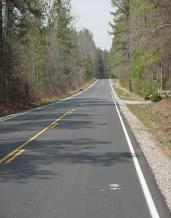




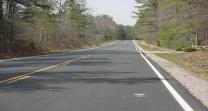



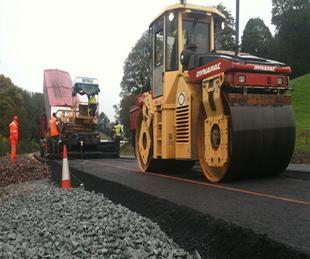
Population
City (Urban / Suburban)
◦ Usually heavier traffic – vehicular and pedestrian County (Rural)
◦ Higher speeds
◦ Pedestrians and wildlife

◦ Possible poor design and construction
4/4/2025
Population
Time of Day
◦ Rush hour (time depends on area)
◦ School hours
◦ Late night, early morning Day of Week
◦ Monday through Friday
◦ Weekends
◦ Holidays
4/4/2025

• You are a PROFESSIONAL driver
• Anything that takes your attention away from the road is dangerous
• Safe driving is not something you practice just some of the time
• Make a commitment to take driving safely seriously
4/4/2025
1. Eliminate distractions
2. Don’t drive drowsy
3. Maintain a safe following distance
4. Don’t speed, know your limits
5. Communicate your intentions to other drivers and pedestrians
“Top Ten” Safe Driving Behaviors
6. Continually survey your surroundings
7. Slow down in rain, snow, ice and fog
8. Be cautious of every intersection-regardless of right-of-way
9. Never roll-through a stop sign
10. When backing up, use a spotter





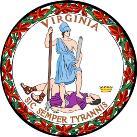


Moral Implications
◦ Public Relations – poor driving skills and practices reflect directly on the agency / department as a whole.
◦ Self-Esteem – nobody wants to be involved in a vehicle crash. Causing a vehicle crash can affect you for the rest of your life
◦ Crashes can be avoided, even if you have to give up your legal right-of-way to the other driver.
Civil Implications
◦ You can be sued by anyone, for any reason, at any time.
◦ The Good Samaritan Law does not apply to emergency vehicle operation.
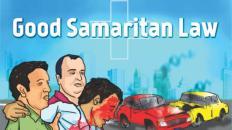
Driving Regulations
◦ Emergency Vehicle Operators are subject to all Motor Vehicle Codes in the Commonwealth of Virginia unless specifically exempted by the law.
◦ Civil liability and criminal prosecution for negligent actions. Exemptions only apply if due regard is taken for the safety of persons and property.
◦ Vehicles must be covered by liability insurance according to the Code of Virginia, or have a certificate of selfinsurance.
Negligence
◦ Any action which violates a standard practice or care.
Necessary Elements
◦ Duty to Act
◦ Breach of Duty
◦ Injury or Loss 2-6

Exemptions from traffic codes apply only if the Emergency Vehicle Operator: OPERATES THE VEHICLE WITH DUE REGARD” FOR THE SAFETY OF OTHER PERSONS AND PROPERTY






The Code of Virginia, Title 46.2, contains certain motor vehicle laws which pertain specifically to emergency vehicle operation and which are in addition to other laws governing the operation of motor vehicles.
Your knowledge of these laws, some of which will be discussed at length, is essential to the safe operation of all vehicles.
Title 46.2 2-8
§ 46.2-818.2
Use of handheld personal communications devices in certain motor vehicles; exceptions; penalty.
A. It is unlawful for any person, while driving a moving motor vehicle on the highways in the Commonwealth, to hold a handheld personal communications device.
B. The provisions of this section shall not apply to: 1. The operator of any emergency vehicle while he is engaged in the performance of his official duties; 2-9
§ 46.2-829
Approach of law-enforcement or fire-fighting vehicles, rescue vehicles, or ambulances; violation as failure to yield right-of-way.
§ 46.2-859
Passing stopped school buses; penalty; prima facie evidence.
§ 46.2-861.1
Drivers to yield right-of-way or reduce speed when approaching stationary vehicles
§ 46.2-890
Stopping in vicinity of fire or emergency 2-10
Motor Vehicle Code – Title 46.2
§ 46.2-920
Emergency vehicles exempt from regulations in certain situations; exceptions and additional requirements.
A. The driver of any emergency vehicle, when such vehicle is being used in the performance of public services, and when such vehicle is operated under emergency conditions, may, without subjecting himself to criminal prosecution:
§ 46.2-920
Emergency vehicles exempt from regulations in certain situations; exceptions and additional requirements.
1. Disregard speed limits, while having due regard for safety of persons and property; Motor Vehicle Code – Title
Emergency vehicles exempt from regulations in certain situations; exceptions and additional requirements.
2. Proceed past any steady or flashing red signal, traffic light, stop sign, or device indicating moving traffic shall stop if the speed of the vehicle is sufficiently reduced to enable it to pass a signal, traffic light, or device with due regard to the safety of persons and property; The safest practice is to come to a complete stop at all intersections!
Motor Vehicle Code – Title 46.2
§ 46.2-920
Emergency vehicles exempt from regulations in certain situations; exceptions and additional requirements.
3. Park or stop notwithstanding the other provisions of this chapter;
§ 46.2-920
Emergency vehicles exempt from regulations in certain situations; exceptions and additional requirements.
4. Disregard regulations governing a direction of movement of vehicles turning in specified directions so long as the operator does not endanger life or property; Motor Vehicle Code – Title 46.2
Motor Vehicle Code – Title 46.2
§ 46.2-920
Emergency vehicles exempt from regulations in certain situations; exceptions and additional requirements.
5. Pass or overtake, with due regard to the safety of persons and property, another vehicle at any intersection;
Motor Vehicle Code – Title 46.2
§ 46.2-920
Emergency vehicles exempt from regulations in certain situations; exceptions and additional requirements.
6. Pass or overtake with due regard to the safety of persons and property, while en route to an emergency, stopped or slow-moving vehicles, by going to the left of the stopped or slow-moving vehicle either in a no-passing zone or by crossing the highway centerline;
§ 46.2-920
Emergency vehicles exempt from regulations in certain situations; exceptions and additional requirements.
7. Pass or overtake with due regard to the safety of persons and property, while en route to an emergency, stopped or slow-moving vehicles, by going off the paved or main traveled portion of the roadway on the right. Notwithstanding other provisions of this section, vehicles exempted in this instance will not be required to sound a siren or any device to give an automatically intermittent signals. Motor Vehicle Code – Title 46.2
B. The exemptions granted to emergency vehicles by subsection A in subdivisions A1, A3, A4, A5, and A6 shall apply only when the operator of such vehicle displays a flashing, blinking, or alternating emergency light or lights as provided in § 46.21022 and § 46.2-1023 and sounds a siren, exhaust whistle, or air horn designed to give automatically intermittent signals, as may be reasonably necessary. *
Continued on next slide
Motor Vehicle Code – Title 46.2 2-19
The exemption granted under subdivision A2 shall apply only when the operator of such emergency vehicle displays a flashing, blinking, or alternating emergency light or lights as provided in § 46.2-1022 and § 46.2-1023 and either (a) sounds a siren, exhaust whistle, or air horn designed to give automatically intermittent signals or (b) slows the vehicle down to a speed reasonable for the existing conditions, yields right-of-way to the driver of another vehicle approaching or entering the intersection from another direction or, if required for safety, brings the vehicle to a complete stop before proceeding with due regard for the safety of persons and property.
(Commonly referred to as “Ashley’s Law” which was enacted because of a 2008 fatal crash in Fairfax County that killed Ashley McIntosh when she was hit broadside at an intersection by a police cruiser responding to an assault.) Motor Vehicle Code – Title 46.2
§ 46.2-921
Following or parking near fire apparatus or rescue squad vehicle.
§ 46.2-922
Driving over fire hose.
§ 46.2-1020
Other permissible lights. Motor Vehicle Code –
Motor Vehicle Code – Title 46.2
§ 46.2-1022
Authorizes flashing blue, red and blue, blue and white, or red, white, and blue warning lights for law enforcement vehicles.
§ 46.2-1023
Authorizes use of red or red and white warning lights on fire apparatus, rescue vehicles, and ambulances.
§ 46.2-1024
Authorizes use of flashing or steady-burning red or red and white warning lights on one privately owned vehicle of fire fighters and rescue squad personnel. (Updated Code July 1, 2024!)
§ 46.2-1025
Flashing amber, purple, or green warning lights. (Updated Code July 1, 2024!)
Motor Vehicle Code – Title 46.2 2-23
§ 46.2-1028
Auxiliary lights on fire-fighting, Virginia Department of Transportation, and other emergency vehicles.
§ 46.2-1028.1
Illuminated identification systems on certain emergency vehicles.
§ 46.2-1029.1
Flashing of headlights on certain vehicles.
Motor Vehicle Code – Title 46.2 2-24
§ 46.2-1029.2
Certain vehicles may be equipped with secondary warning lights.
§ 46.2-1061
Sirens or exhaust whistles on emergency vehicles.
Motor Vehicle Code – Title 46.2 2-25
Motor Vehicle Code – Title 46.2
§ 46.2-1078
Unlawful to operate motor vehicle, bicycle, electric personal assistive mobility device, electric powerassisted bicycle, or moped while using earphones.
§ 46.2-1095
Child restraint devices required when transporting certain children; safety belts for other children less than sixteen years old required; penalty.
The Code of Virginia, Title 46.2 contains a number of laws other than driving regulations which directly impact emergency vehicle operations.
◦ The Superintendent of State Police has broad powers to regulate and approve safety equipment for emergency vehicles.
◦ Some of these laws must be observed before emergency vehicle exemptions to driving regulations are valid and effective. 2-27
4/4/2025
Motor Vehicle Code – Title 46.2
Other Considerations
◦ The Motor Vehicle Code-Title 46.2 does not specifically define what constitutes an emergency response.
◦ Due regard is the actions of a prudent person in an emergency.
◦ Individual agency / department policies cannot legally allow other exemptions than those stated by Virginia Law
4/4/2025
•§44-146.16. Definitions.
§ 8.01-225.3
Immunity for volunteer first responders en route to an emergency.
Notwithstanding any other provision of law, no volunteer firefighter or volunteer emergency medical services personnel shall be liable for any injury to persons or property arising out of the operation of an emergency vehicle as defined in § 46.2-920 when such volunteer is en route to respond to a fire or to render emergency care or assistance to any ill or injured person at the scene of an accident, fire, or life-threatening emergency and the emergency vehicle displays warning lights as provided in § 46.2-1022 or 46.2-1023 and sounds a siren, exhaust whistle, or air horn, unless such injury results from gross negligence or willful or wanton misconduct.
There are many other pertinent laws that govern the safe operations of motor vehicles and other reference criminal laws listed in your student manual.
Please review these referenced laws. 2-30
You must obey all Virginia Laws unless a specific exemption is granted to emergency vehicles. If an exemption is granted you must adhere to all of the requirements specified in that exemption. Remember and apply “Due Regard” at all times. If you are utilizing emergency lights you must engage your siren as “may be reasonably necessary”.
2-31





Emergency Driving
◦ An extremely complicated form of driving
◦ Higher speeds
◦ Evasive maneuvering
Communications
◦ Vital link in our system
◦ While not under our control, dispatchers can influence how we respond
◦ Driver should take time to review incident location and factors, which may affect response route 3-2
4/4/2025
Intersections
◦ The number one place where emergency vehicle crashes occur.
Negotiating Safely
◦ Blind and heavily traveled intersections should be approached and crossed at 15 mph or less.
◦ Use of warning devices is essential.
The safest practice is to come to a complete stop at all controlled intersections!
4/4/2025
Negotiating Safely
◦ Make eye-to-eye contact with each driver at the intersection to insure they see you.
◦ Check for hazards by looking left, then right, then left again.
◦ Multiple lane intersections are challenging for driver operators and require each lane to be cleared prior to proceeding. ** Your closest danger is from the left! **
◦ Pass on the left whenever possible.
◦ Loading and/or unloading
◦ YOU MUST STOP !
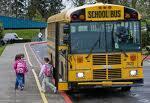
◦ Wait for the red warning lights to deactivate and the driver’s signal to pass.
4/4/2025
◦ Should not be used because you are unfamiliar with road conditions.
◦ Neighborhood residents (children) are not used to emergency vehicles and rush to the street to see the action.
4/4/2025
Sirencide – the emotional reaction of emergency vehicle drivers when they begin to feel a sense of power and urgency that block out reason and prudence, leading to reckless operation of the emergency vehicle.
◦ A driver depends on his / her siren to move traffic for him / her and will eventually get over-relaxed to the conditions.
◦ The only way to prevent it is to know that it happens and guard against it.
4/4/2025
◦ What is in front and back of you?
◦ What is to your left and right?
◦ What is above and below you?
4/4/2025
Headlights –
◦ The most effective warning lights you have.
◦ Daylight Running Lights (DRL) are recommended.
Following Other Emergency Vehicles
◦ Units responding along the same route should maintain 500 feet distance between them.
◦ Use a different siren tone than the vehicle ahead of you.
4/4/2025
Responding
Speed Adjustment
◦ Type of call
◦ Weather conditions



◦ Remote controlled traffic devices along predetermined routes.
◦ Some cities use strobe lights on emergency vehicles and sensors on traffic lights (Opticom).
◦ Traffic control devices have increased efficiency but should not be considered fool proof.
4/4/2025
Roundabouts: Tips for driving safely through a roundabout:
• As you approach the roundabout, slow down; look for the street and direction signs. This will help you know which exit to take. These signs should be posted along the roadside before you reach the roundabout.
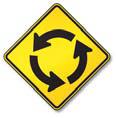
• When you arrive at the roundabout, yield the right-of-way to pedestrians and bicyclists. You also must yield to any vehicles already in the roundabout. Sometimes your entry point will be controlled by a stop or yield sign, or traffic signal. When the way is clear, you may enter the roundabout. 3-12

Pedestrians are especially prone to serious injury when struck.
Be careful around schools, playgrounds and in residential areas where small children may be playing or crossing the street.
Look out for the elderly, who may have poor vision and hearing. Remember that the elderly and people with disabilities may move slowly.
Be especially aware of pedestrians when making a right or left turn. They have the right-of-way. Allow pedestrians to completely cross the street before beginning your turn.
Passing at a crosswalk is illegal. You may not see pedestrians crossing the road in front of other vehicles.
Be alert for pedestrians at all times. Slow down and be prepared to stop.

3-13
Bicycles
Bicycles are considered vehicles and have the same right-of-way as motor vehicles.
Bicyclists are allowed to ride in the center of the lane, when necessary, such as when they are about to turn left or when the lane is too narrow to share side-by-side with a car.
Bicyclists are legally allowed on all public roads except interstates and most freeways (limited access highways).
Bicyclists may also be riding in either direction on sidewalks.
Bicyclists are expected to obey the same traffic rules and regulations as vehicle drivers; however, some may not know or obey the rules.

Bicycles
Check your blind spots.
Slow down when you approach bicyclists.
Using marked bicycle lanes is prohibited by motor vehicles, including while passing.
State law requires motorists to pass cyclists with at least three feet of clearance.
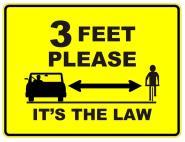
Give them plenty of room when passing and be prepared to stop suddenly.
A bicycle’s small size allows it to slip into your blind spot easily.
Always check for bicyclists before you pull out, change lanes, turn, back up, open the door, or proceed through an intersection.


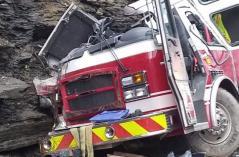

Crash Avoidance
Driver Error
◦ The leading cause of vehicle crashes.
Types of Crashes
◦ Vehicle Ahead of You
◦ Vehicle Behind You
◦ Collision from Side
◦ Passing Other Vehicles
◦ Vehicle Passing You
◦ Head-On Collision
4/4/2025

Crash Avoidance
The two vehicle crash accounts for more fatalities, injuries, and property damage than any other type.

*70% of serious vehicle crashes are at intersections!!
*Source – US Fire Administration EMS Safety
Crash Avoidance
Time of Day
◦ Allow extra space cushion
◦ Consider lane choice
◦ Be aware of impaired drivers
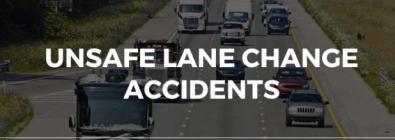
Backing
◦ Use spotter whenever possible
◦ Accomplish slowly
◦ Concentrate attention (on spotter and in the direction you are backing)
◦ Rear and side cameras are considered tools to supplement vision
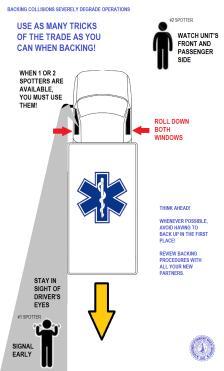
Avoid backing whenever possible. Always utilize a spotter (ground guide) when available.
◦ Department policy
◦ Spotter positioning
◦ Areas of responsibility
◦ Communication Crash Avoidance




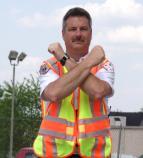
Hand signals need to be visible from a distance.
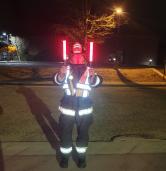
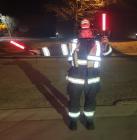

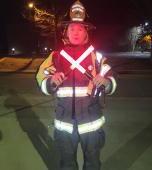
Hand signals need to be visible from a distance and in all conditions. Crash Avoidance

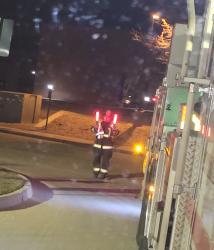
Braking Techniques
◦ Apply steady pressure.
◦ Pumping action not recommended for ABS
◦
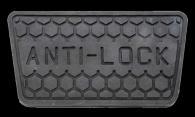

◦ Loss of traction between road surface and tires

Types of Skids
◦ Front wheel – front wheel(s) locked
◦ Rear wheel – rear wheel(s) locked
◦ Four wheel – all wheels locked
◦ Power skid – excessive acceleration
◦ Spin out – too fast for turns
◦ Hydroplaning – tires riding on fluids instead of road surface (can begin at 30 m.p.h.)
4/4/2025
3-27
Skids
◦ Weight shifts can contribute to skids
◦ Adequate tire pressure and tread are critical for skid prevention
Skid Control
◦ Release brakes
◦ Turn steering wheel in direction of skid
◦ Do not over steer – secondary skid is usually worse
◦ Once skid is controlled, gradually apply power
4/4/2025
3-28
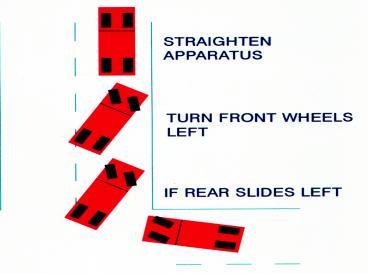
Crash Avoidance
Lessen the severity of the crash
◦ Decrease speeds
◦ Go off the road if necessary
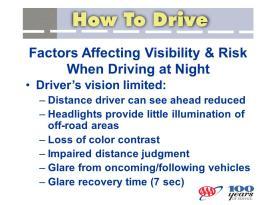
4/4/2025

We’ve discussed the importance of responding to the incident safely.
How do we maintain our safety once we arrive on the scene?
Scene safety is a priority, but even by doing things the correct way.
Bad Things Happen To Good People!
4/4/2025
Organizational Philosophy

“Firefighters responding to calls need to operate as if someone is trying to run them over.”


Joyce, Retired Commissioner Chicago Fire Department
Organizational Philosophy

“All highly predictable incidents are highly preventable incidents!”


Dennis Rubin, Fire Chief
Fire Department

Major – expected duration of more than two (2) hours.
Intermediate – expected duration of thirty (30) minutes to two (2) hours.
Minor – expected duration under thirty (30) minutes.

Limit the Exposure
◦ Minimum apparatus and personnel
◦ Limit crews on scene to only those necessary
Limit the Time On Scene
◦ Clear-up crews as soon as possible
Five Parts of the Temporary Traffic Control Zone








Apparatus Positioning Locations
•Uphill, if possible Upwind, if possible

4/4/2025
Highways Responses (General) Interstates
◦ Block traffic as necessary – cooperate with law enforcement
◦ Use vehicle as safety barrier
Curved and Straight Roads
◦ Anticipate hazards from both directions
◦ Place warning devices to channel traffic to desired areas
4/4/2025
Highways Responses (General)
Warning Device Placement (General)
◦ Appropriate distance for road speed
◦ Should be visible during all conditions
◦ Should not create additional hazards
◦ Do not use flares near fuel spills
◦ Cones are more common and cost effective
4/4/2025
Every incident presents its own requirements
Type of Incident
◦ EMS
◦ Fire
◦ Rescue
Location of Incident
◦ Hazards
◦ Congested areas

◦ Amount of room / space needed
4/4/2025
Type of Vehicle
◦ Ambulance / Medic – patient care
◦ Engine – attack and water supply
◦ Rescue Squad – extrication
◦ Aerial – limited reach
◦ Support Vehicle(s) – specialized equipment and/or personnel
4/4/2025
Apparatus Positioning and Arrangement
◦ Block left, block right
◦ Guard the scene, guard the crew
◦ Park apparatus at an angle and turn the wheels away from incident
4/4/2025

• Work on side away from traffic
• Look! Before disembarking apparatus
• Consider Pump Operators and location of equipment
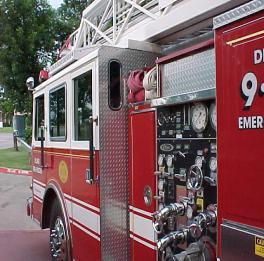
4/4/2025
Scene Lighting
◦ Reduce emergency lights, use “Blocking” mode, (Sign Boards, Arrow Boards, Arrow Sticks off while vehicle is in motion)
◦ If available, turn off all forward facing lights while vehicle is parked at incident scene
◦ Provide scene illumination after dark
◦ Presence of law enforcement vehicles shown to slow traffic
4/4/2025
Cones
- 28” minimum height, 36” height suggested - Cones utilized at night require a 6” retroreflectorized band with a 4” retroreflectorized band spaced 2” apart - Orange color approved for roadway usage, limegreen not approved - NFPA 1901 Revision

4/4/2025











◦ At a minimum apparatus should be able to deploy a 200’ taper with five (5) cones placed at 50’ spacing between cones.
◦ A “safety cone” should be placed approximately 10’ behind the apparatus, located so that it provides a safe work zone next to the vehicle.












Signs
- 48” X 48” standard size
-Orange prismatic lens sheeting for daytime or nighttime operations is the standard background color with black lettering
- Fluorescent Pink (Coral) for daytime or nighttime operations is now an option for emergency responders
4/4/2025








4/4/2025
GUIDELINES FOR THE DRIVING RANGE
Driving Range Considerations:
◦ Weather conditions
◦ Rest room breaks and locations
◦ Parking at the range
◦ Staging area
◦ Clothing – appropriate footwear
◦ Window down for communication with instructor (s)
◦ Horn selection and usage designated by Lead Instructor 4-2
4/4/2025
GUIDELINES FOR THE DRIVING RANGE
Driving Range Rules
• Arrive on time.
• Recommend no persons allowed in the vehicle except the driver during evaluation
• Seat belts will be worn at all times
• Horn must be sounded before any reverse maneuver.
• Engage parking brake and wheel chocks (Class 3 and above) when vehicle is stopped.
• Emergency flashers on when vehicle is parked.
• Door closed when driver exits vehicle.
• Other course / location / vehicle specific rules. 4-3
4/4/2025
GUIDELINES FOR THE DRIVING RANGE
Vehicle Orientation
◦ Vehicle Maintenance Check-off Sheets
◦ Vehicle controls and operations
◦ Vehicle overhead and width clearances
◦ Front bumper / Back step locations and design
◦ Seat and mirror adjustment
4/4/2025
GUIDELINES FOR THE DRIVING RANGE
Vehicle pivot points and how they relate to driving the course

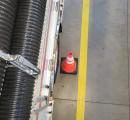
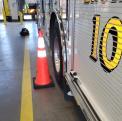

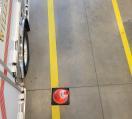

EVALUATION FOR THE DRIVING RANGE
Lead Instructor has final determination on range setup and Student Performance Criteria
Students must pass minimum skills evaluation requirements (on all events) – Minimum of 5 events
Successfully complete each course set-up on the range.
Does not exceed the number of points assigned to the driving course by the Lead Instructor.
Points are assessed for cone strikes and range rule violations.
A student may be tested up to two (2) times during the course. Any further remediation can be delayed until other students have completed the course or at discretion of Lead Instructor
Time requirements for completing the driving course are flexible according to the course set-up.
Adjust event size for vehicle being used in evaluation
Background Information
Since the majority of vehicle crashes occur while backing at slow speeds, this exercise is one of great importance. This exercise emphasizes the use of a spotter to assist the driver in a backing situation. This exercise is not counted as 1 of the 5 courses required for completion of class, but is required of every student

Objectives: Proper Spotter Position Proper Communication

Common Problems: Loss of Spotter in Mirrors Poor Hand Signals Driver Inattention
Range Set Up

Utilize any Course that Requires Backing Driver not evaluated
Student Information

The speed at which the vehicle is driven is SLOW. The spotter must successfully guide the driver thru the course. Drivers’ sometimes need assistance getting out of a tight spot. Therefore, the spotter should also assist the driver going forward out of the course.
Success Completion


Demonstrate Proper Signaling both Forward and Backward
Back
Blindside Backing J – Curve Backing Maneuver
Enter

From START positionDrive thru course –Stop within 12 inches of cones with front bumper
Back thru course to start
Adjust course for vehicle as needed
From the start position the student will enter the lane and proceed to the left – then back down the course to within 12 inches of the cones – the student will then exit the course. Repeating the course to the right is allowed for additional skills practice but is not required
Cone Course Layout - Example #2
Course Layout Example # 3
Course Layout - Example #4







§ 46.2-818.2. Use of handheld personal communications devices in certain motor vehicles; exceptions; penalty.
A. It is unlawful for any person, while driving a moving motor vehicle on the highways in the Commonwealth, to hold a handheld personal communications device.
B. The provisions of this section shall not apply to:
1. The operator of any emergency vehicle while he is engaged in the performance of his official duties;
2. An operator who is lawfully parked or stopped;
3. Any person using a handheld personal communications device to report an emergency;
4. The use of an amateur or a citizens band radio; or
5. The operator of any Department of Transportation vehicle or vehicle operated pursuant to the Department of Transportation safety service patrol program or pursuant to a contract with the Department of Transportation for, or that includes, traffic incident management services as defined in subsection B of § 46.2-920.1 during the performance of traffic incident management services.
C. A violation of this section is a traffic infraction punishable, for a first offense, by a fine of $125.
D. A violation of this section is a traffic infraction punishable, for a second or subsequent offense, by a fine of $250.
E. If a violation of this section occurs in a highway work zone, it shall be punishable by a mandatory fine of $250.
F. For the purposes of this section:
"Emergency vehicle" means:
1. Any law-enforcement vehicle operated by or under the direction of a federal, state, or local lawenforcement officer while engaged in the performance of official duties;
2. Any regional detention center vehicle operated by or under the direction of a correctional officer responding to an emergency call or operating in an emergency situation;
3. Any vehicle used to fight fire, including publicly owned state forest warden vehicles, when traveling in response to a fire alarm or emergency call;
4. Any emergency medical services vehicle designed or used for the principal purpose of supplying resuscitation or emergency relief where human life is endangered;
5. Any Department of Emergency Management vehicle or Office of Emergency Medical Services vehicle, when responding to an emergency call or operating in an emergency situation;
6. Any Department of Corrections vehicle designated by the Director of the Department of Corrections, when (i) responding to an emergency call at a correctional facility, (ii) participating in a drug-related investigation, (iii) pursuing escapees from a correctional facility, or (iv) responding to a request for assistance from a law-enforcement officer; and
Page 2 of 38 Revised November 1, 2025
7. Any vehicle authorized to be equipped with alternating, blinking, or flashing red or red and white secondary warning lights pursuant to § 46.2-1029.2
"Highway work zone" means a construction or maintenance area that is located on or beside a highway and is marked by appropriate warning signs with attached flashing lights or other traffic control devices indicating that work is in progress.
G. Distracted driving shall be included as a part of the driver's license knowledge examination. 2020, cc. 250, 543; 2023, cc. 557, 558.
§ 46.2-829. Approach of law-enforcement or fire-fighting vehicles, rescue vehicles, or ambulances; violation as failure to yield right-ofway.
Upon the approach of any emergency vehicle as defined in § 46.2-920 giving audible signal by siren, exhaust whistle, or air horn designed to give automatically intermittent signals, and displaying a flashing, blinking, or alternating emergency light or lights as provided in §§ 46.21022 through 46.2-1024, the driver of every other vehicle shall, as quickly as traffic and other highway conditions permit, drive to the nearest edge of the roadway, clear of any intersection of highways, and stop and remain there, unless otherwise directed by a law-enforcement officer, until the emergency vehicle has passed. This provision shall not relieve the driver of any such vehicle to which the right-of-way is to be yielded of the duty to drive with due regard for the safety of all persons using the highway, nor shall it protect the driver of any such vehicle from the consequences of an arbitrary exercise of such right-of-way.
Violation of this section shall constitute failure to yield the right-of-way; however, any violation of this section that involves overtaking or passing a moving emergency vehicle giving an audible signal and displaying activated warning lights as provided for in this section shall constitute reckless driving, punishable as provided in § 46.2-868.
Code 1950, § 46-241; 1958, c. 541, § 46.1-225; 1960, c. 570; 1966, cc. 613, 699; 1968, c. 89; 1976, c. 754; 1984, c. 539; 1985, c. 462; 1989, c. 727; 1993, c. 579.
A person driving a motor vehicle shall stop such vehicle when approaching, from any direction, any school bus which is stopped on any highway, private road or school driveway for the purpose of taking on or discharging children, elderly individuals, or individuals with mental or physical disabilities, and shall remain stopped until all the individuals are clear of the highway, private road or school driveway and the bus is put in motion; any individual violating the foregoing is guilty of reckless driving. The driver of a vehicle, however, need not stop when approaching a school bus if the school bus is stopped on the other roadway of a divided highway, on an access road, or on a driveway when the other roadway, access road, or driveway is separated from the roadway on which he is driving by a physical barrier or an unpaved area. The driver of a vehicle also need not stop when approaching a school bus which is loading or discharging passengers from or onto property immediately adjacent to a school if the driver is directed by a law-enforcement officer or
Page 3 of 38
Revised November 1, 2025
other duly authorized uniformed school crossing guard to pass the school bus. This section shall apply to school buses which are equipped with warning devices prescribed in § 46.2-1090 and are painted yellow with the words "School Bus" in black letters at least eight inches high on the front and rear thereof.
Only school buses which are painted yellow and equipped with the required lettering and warning devices shall be identified as school buses.
The testimony of the school bus driver, the supervisor of school buses or a law-enforcement officer that the vehicle was yellow, conspicuously marked as a school bus, and equipped with warning devices as prescribed in § 46.2-1090 is prima facie evidence that the vehicle is a school bus.
Evidence that the bus was stopped with at least one warning device prescribed in § 46.21090 activated shall be considered prima facie evidence that the bus was stopped for the purpose of taking on or discharging children, elderly individuals, or individuals with mental or physical disabilities.
Code 1950, §§ 46-209, 46-209.1; 1950, p. 880; 1952, c. 671; 1954, cc. 225, 401, 458; 1958, c. 541, § 46.1-190; 1960, c. 510; 1964, c. 266; 1966, c. 694; 1968, c. 575; 1970, c. 521; 1974, cc. 222, 455; 1975, c. 633; 1978, c. 27; 1979, c. 86; 1981, cc. 333, 585; 1985, c. 148; 1989, c. 727; 2001, c. 126; 2002, c. 541; 2011, cc. 325, 326; 2023, cc. 148, 149, 382
§ 46.2-861.1. Drivers to yield right-of-way or reduce speed when approaching stationary vehicles displaying certain warning lights on highways; penalties.
A. The driver of any motor vehicle, upon approaching a stationary vehicle that is displaying a flashing, blinking, or alternating blue, red, or amber light or lights as provided in § 46.21022, 46.2-1023, or 46.2-1024 or subsection B of § 46.2-1026 shall (i) on a highway having at least four lanes, at least two of which are intended for traffic proceeding as the approaching vehicle, proceed with caution and, if reasonable, with due regard for safety and traffic conditions, yield the right-of-way by making a lane change into a lane not adjacent to the stationary vehicle or (ii) if changing lanes would be unreasonable or unsafe, proceed with due caution and maintain a safe speed for highway conditions. A violation of any provision of this subsection is reckless driving.
B. The driver of any motor vehicle, upon approaching a stationary vehicle that (i) is displaying a flashing, blinking, or alternating amber light or lights as provided in subdivision A 1 or 2 of § 46.21025, (ii) has activated the vehicular hazard warning signal flashers, (iii) is displaying caution signs, or (iv) is marked with properly lit flares or torches shall (a) on a highway having at least four lanes, at least two of which are intended for traffic proceeding as the approaching vehicle, proceed with caution and, if reasonable, with due regard for safety and traffic conditions, yield the right-of-way by making a lane change into a lane not adjacent to the stationary vehicle or (b) if changing lanes would be unreasonable or unsafe, proceed with due caution and maintain a safe speed for highway conditions. A violation of any provision of this subsection shall be punishable as a traffic infraction.
C. If the violation resulted in damage to property of another person, the court may, in addition, order the suspension of the driver's privilege to operate a motor vehicle for not more than one year.
Page 4 of 38
Revised November 1, 2025
If the violation resulted in injury or death to another person, the court may, in addition to any other penalty imposed, order the suspension of the driver's privilege to operate a motor vehicle for not more than two years.
D. The provisions of this section shall not apply in highway work zones as defined in § 46.2-878.1 2019, c. 850; 2023, cc. 616, 617.
No vehicle shall be stopped at or in the vicinity of a fire, vehicle or airplane accident, or other area of emergency, in such a manner as to create a traffic hazard or interfere with law-enforcement officers, fire fighters, rescue workers, or others whose duty it is to deal with such emergencies. Any vehicle found unlawfully parked in the vicinity of a fire, accident, or area of emergency may be removed by order of a law-enforcement officer or, in the absence of a law-enforcement officer, by order of the uniformed fire or rescue officer in charge, at the risk and expense of the owner if such vehicle creates a traffic hazard or interferes with the necessary procedures of law-enforcement officers, fire fighters, rescue workers, or others whose assigned duty it is to deal with such emergencies. The charge for such removal shall not exceed the actual and necessary cost. Vehicles being used by accredited information services, such as press, radio, and television, when being used for the gathering of news, shall be exempt from the provisions of this section, except when actually obstructing the law-enforcement officers, fire fighters, and rescue workers dealing with such emergencies.
Code 1950, § 46-256; 1952, c. 671; 1958, c. 541, § 46.1-248; 1962, c. 175; 1972, c. 63; 1974, c. 230; 1977, cc. 284, 326; 1985, c. 93; 1989, c. 727.
§ 46.2-920. Certain vehicles exempt from regulations in certain situations; exceptions and additional requirements.
A. The driver of any emergency vehicle, when such vehicle is being used in the performance of public services, and when such vehicle is operated under emergency conditions, may, without subjecting himself to criminal prosecution:
1. Disregard speed limits, while having due regard for safety of persons and property;
2. Proceed past any steady or flashing red signal, traffic light, stop sign, or device indicating moving traffic shall stop if the speed of the vehicle is sufficiently reduced to enable it to pass a signal, traffic light, or device with due regard to the safety of persons and property;
3. Park or stop notwithstanding the other provisions of this chapter;
4. Disregard regulations governing a direction of movement of vehicles turning in specified directions so long as the operator does not endanger life or property;
5. Pass or overtake, with due regard to the safety of persons and property, another vehicle at any intersection;
Page 5 of 38 Revised November 1, 2025
6. Pass or overtake with due regard to the safety of persons and property, while en route to an emergency, stopped or slow-moving vehicles, by going to the left of the stopped or slow-moving vehicle either in a no-passing zone or by crossing the highway centerline; or
7. Pass or overtake with due regard to the safety of persons and property, while en route to an emergency, stopped or slow-moving vehicles, by going off the paved or main traveled portion of the roadway on the right. Notwithstanding other provisions of this section, vehicles exempted in this instance will not be required to sound a siren or any device to give automatically intermittent signals.
B. The exemptions granted to emergency vehicles by subsection A in subdivisions A1, A3, A4, A5, and A6 shall apply only when the operator of such vehicle displays a flashing, blinking, or alternating emergency light or lights as provided in §§ 46.2-1022 and 46.2-1023 and sounds a siren, exhaust whistle, or air horn designed to give automatically intermittent signals, as may be reasonably necessary. The exemption granted under subdivision A 2 shall apply only when the operator of such emergency vehicle displays a flashing, blinking, or alternating emergency light or lights as provided in §§ 46.2-1022 and 46.2-1023 and either (a) sounds a siren, exhaust whistle, or air horn designed to give automatically intermittent signals or (b) slows the vehicle down to a speed reasonable for the existing conditions, yields right-of-way to the driver of another vehicle approaching or entering the intersection from another direction or, if required for safety, brings the vehicle to a complete stop before proceeding with due regard for the safety of persons and property. In addition, the exemptions granted to emergency vehicles by subsection A shall apply only when there is in force and effect for such vehicle either (i) standard motor vehicle liability insurance covering injury or death to any person in the sum of at least $100,000 because of bodily injury to or death of one person in any one accident and, subject to the limit for one person, to a limit of $300,000 because of bodily injury to or death of two or more persons in any one accident, and to a limit of $20,000 because of injury to or destruction of property of others in any one accident or (ii) a certificate of self-insurance issued pursuant to § 46.2-368. Such exemptions shall not, however, protect the operator of any such vehicle from criminal prosecution for conduct constituting reckless disregard of the safety of persons and property. Nothing in this section shall release the operator of any such vehicle from civil liability for failure to use reasonable care in such operation.
C. For the purposes of this section, the term "emergency vehicle" shall mean:
1. Any law-enforcement vehicle operated by or under the direction of a federal, state, or local lawenforcement officer (i) in the chase or apprehension of violators of the law or persons charged with or suspected of any such violation or (ii) in response to an emergency call;
2. Any regional detention center vehicle operated by or under the direction of a correctional officer responding to an emergency call or operating in an emergency situation;
3. Any vehicle used to fight fire, including publicly owned state forest warden vehicles, when traveling in response to a fire alarm or emergency call;
4. Any emergency medical services vehicle designed or used for the principal purpose of providing emergency medical services where human life is endangered;
5. Any Department of Emergency Management vehicle or Office of Emergency Medical Services vehicle, when responding to an emergency call or operating in an emergency situation;
Page 6 of 38 Revised November 1, 2025
6. Any Department of Corrections vehicle designated by the Director of the Department of Corrections, when (i) responding to an emergency call at a correctional facility, (ii) participating in a drug-related investigation, (iii) pursuing escapees from a correctional facility, or (iv) responding to a request for assistance from a law-enforcement officer;
7. Any vehicle authorized to be equipped with alternating, blinking, or flashing red or red and white secondary warning lights under the provisions of § 46.2-1029.2;
8. Any Virginia National Guard Civil Support Team vehicle when responding to an emergency; and
9. Any vehicle operated by the Response and Recovery Coordination Branch of the Washington Metropolitan Area Transit Authority's Office of Emergency Preparedness, when responding to an emergency, provided that the operator of any such vehicle (i) has completed an initial emergency vehicle operators course from an approved course list prepared by the Department of Fire Programs, the Office of Emergency Medical Services, or an equivalent agency and (ii) recertifies as an emergency vehicle operator every two years.
D. Any law-enforcement vehicle operated by or under the direction of a federal, state, or local lawenforcement officer may disregard speed limits, while having due regard for safety of persons and property, (i) in testing the accuracy of speedometers of such vehicles, (ii) in testing the accuracy of speed measuring devices specified in § 46.2-882, or (iii) in following another vehicle for the purpose of determining its speed.
E. A Department of Environmental Quality vehicle, while en route to an emergency and with due regard to the safety of persons and property, may overtake and pass stopped or slow-moving vehicles by going off the paved or main traveled portion of the highway on the right or on the left. These Department of Environmental Quality vehicles shall not be required to sound a siren or any device to give automatically intermittent signals, but shall display red or red and white warning lights when performing such maneuvers.
F. Any law-enforcement vehicle operated by or under the direction of a federal, state, or local lawenforcement officer while conducting a funeral escort, wide-load escort, dignitary escort, or any other escort necessary for the safe movement of vehicles and pedestrians may, without subjecting himself to criminal prosecution:
1. Disregard speed limits, while having due regard for safety of persons and property;
2. Proceed past any steady or flashing red signal, traffic light, stop sign, or device indicating moving traffic shall stop if the speed of the vehicle is sufficiently reduced to enable it to pass a signal, traffic light, or device with due regard for the safety of persons and property;
3. Park or stop notwithstanding the other provisions of this chapter;
4. Disregard regulations governing a direction of movement of vehicles turning in specified directions so long as the operator does not endanger life or property; or
5. Pass or overtake, with due regard for the safety of persons and property, another vehicle.
Notwithstanding other provisions of this section, vehicles exempted in this subsection may sound a siren or any device to give automatically intermittent signals.
Code 1950, § 46-241.1; 1954, c. 356; 1956, c. 192; 1958, c. 541, § 46.1-226; 1966, cc. 350, 699; 1968, c. 89; 1974, c. 365; 1976, c. 24; 1977, c. 549; 1980, cc. 30, 354; 1981, c. 395; 1984, c. 539; 1985, cc. 209, 462; 1989, c. 727; 1992, cc. 33, 96; 1994, c. 69; 1995, c. 92; 2000, c. 120; 2002, c. 134; 2003, c. 115; 2005, c. 583; 2007, cc. 860, 908; 2011, c. 629; 2014, cc. 171, 800; 2015, cc. 502, 503; 2023, cc. 88, 89.
§ 46.2-921. Following or parking near fire apparatus or emergency medical services vehicle.
It shall be unlawful, in any county, city, or town for the driver of any vehicle, other than one on official business, to follow any fire apparatus or emergency medical services vehicle traveling in response to a fire alarm or emergency call at any distance closer than 500 feet to such apparatus or emergency medical services vehicle or to park such vehicle within 500 feet of where fire apparatus has stopped in answer to a fire alarm.
Code 1950, § 46-242; 1958, c. 541, § 46.1-227; 1981, c. 394; 1989, c. 727; 2015, cc. 502, 503.
§ 46.2-922. Driving over fire hose.
It shall be unlawful, without the consent of the fire department official in command, for the driver of any vehicle to drive over any unprotected hose of a fire department laid down for use at any fire or alarm of fire.
Code 1950, § 46-242.1; 1954, c. 13; 1958, c. 541, § 46.1-228; 1989, c. 727.
§ 46.2-1020. Other permissible lights.
Any motor vehicle may be equipped with fog lights, not more than two of which can be illuminated at any time, one or two auxiliary driving lights if so equipped by the manufacturer, two daytime running lights, two side lights of not more than six candlepower or 75.42 lumens, an interior light or lights of not more than 15 candlepower or 188.55 lumens each, and signal lights.
The provision of this section limiting interior lights to no more than 15 candlepower or 188.55 lumens shall not apply to (i) alternating, blinking, or flashing colored emergency lights mounted inside law-enforcement motor vehicles which may otherwise legally be equipped with such colored emergency lights, or (ii) flashing shielded red or red and white lights, authorized under § 46.2-1024, mounted inside vehicles owned or used by (a) members of volunteer fire companies or volunteer emergency medical services agencies, (b) professional firefighters, or (c) police chaplains. A vehicle equipped with lighting devices as authorized in this section shall be operated by a police chaplain only if he has successfully completed a course of training in the safe operation of a motor vehicle under emergency conditions and a certificate attesting to such successful completion, signed by the course instructor, is carried at all times in the vehicle when operated by the police chaplain to whom the certificate applies.
Page 8 of 38
Revised November 1, 2025
Unless such lighting device (i) is both covered and unlit or (ii) has a clear lens, any reflector in such lighting device is clear, and such lighting device is unlit, no motor vehicle that is equipped with any lighting device other than lights required or permitted in this article, required or approved by the Superintendent, or required by the federal Department of Transportation shall be operated on any highway in the Commonwealth. Nothing in this section shall permit any vehicle, not otherwise authorized, to be equipped with colored emergency lights, whether blinking or steadyburning.
Code 1950, § 46-273; 1954, c. 310; 1958, c. 541, § 46.1-267; 1960, cc. 156, 391; 1962, c. 512; 1966, cc. 655, 664; 1968, c. 89; 1972, c. 7; 1974, c. 537; 1976, c. 6; 1977, c. 72; 1978, cc. 311, 357; 1980, c. 337; 1981, c. 338; 1984, cc. 440, 539; 1985, cc. 248, 269, 287, 462; 1986, cc. 124, 127, 229; 1987, cc. 347, 370; 1988, cc. 339, 351; 1989, c. 727; 1991, c. 516; 1995, c. 122; 2003, c. 153; 2006, c. 122; 2015, cc. 502, 503; 2018, c. 72; 2020, c. 393.
§ 46.2-1022. Flashing or steady-burning blue or red, flashing red and blue or blue and white, or red, white, and blue warning lights.
Certain Department of Military Affairs vehicles and certain Virginia National Guard vehicles designated by the Adjutant General, when used in state active duty to perform particular lawenforcement functions, Department of Corrections vehicles designated by the Director of the Department of Corrections, and law-enforcement vehicles may be equipped with flashing, blinking, or alternating blue, blue and red, blue and white, or red, white, and blue combination warning lights of types approved by the Superintendent. Such warning lights may be of types constructed within turn signal housings or motorcycle headlight housings, subject to approval by the Superintendent.
Law-enforcement vehicles may also be equipped with steady-burning blue or red warning lights of types approved by the Superintendent.
Code 1950, § 46-273; 1954, c. 310; 1958, c. 541, § 46.1-267; 1960, cc. 156, 391; 1962, c. 512; 1966, cc. 655, 664; 1968, c. 89; 1972, c. 7; 1974, c. 537; 1976, c. 6; 1977, c. 72; 1978, cc. 311, 357; 1980, c. 337; 1981, c. 338; 1984, cc. 440, 539; 1985, cc. 248, 269, 287, 462; 1986, cc. 124, 127, 229; 1987, cc. 347, 370; 1988, cc. 339, 351; 1989, c. 727; 1992, c. 96; 1996, cc. 141, 347; 2004, c. 323; 2008, c. 181; 2018, c. 651.
Fire apparatus, forest warden vehicles, emergency medical services vehicles, vehicles of the Department of Emergency Management, vehicles of the Department of Environmental Quality, vehicles of the Virginia National Guard Civil Support Team and the Virginia National Guard Chemical, Biological, Radiological, Nuclear and High Yield Explosive (CBRNE) Enhanced Response Force Package (CERFP) when responding to an emergency, vehicles of county, city, or town Departments of Emergency Management, vehicles of the Office of Emergency Medical Services, animal warden vehicles, vehicles of the Response and Recovery Coordination Branch of the Washington Metropolitan Area Transit Authority's Office of Emergency Preparedness, and vehicles used by security personnel of the Huntington Ingalls Industries, Bassett-Walker, Inc., the
Page 9 of 38
Revised November 1, 2025
Winchester Medical Center, the National Aeronautics and Space Administration's Wallops Flight Facility, and, within those areas specified in their orders of appointment, by special conservators of the peace and policemen for certain places appointed pursuant to §§ 19.2-13 and 19.2-17 may be equipped with flashing, blinking, or alternating red or red and white combination warning lights of types approved by the Superintendent. Such warning lights may be of types constructed within turn signal housings or motorcycle headlight housings, subject to approval by the Superintendent.
Code 1950, § 46-273; 1954, c. 310; 1958, c. 541, § 46.1-267; 1960, cc. 156, 391; 1962, c. 512; 1966, cc. 655, 664; 1968, c. 89; 1972, c. 7; 1974, c. 537; 1976, c. 6; 1977, c. 72; 1978, cc. 311, 357; 1980, c. 337; 1981, c. 338; 1984, cc. 440, 539; 1985, cc. 248, 269, 287, 462; 1986, cc. 124, 127, 229; 1987, cc. 347, 370; 1988, cc. 339, 351; 1989, c. 727; 1991, c. 105; 1992, c. 34; 1994, c. 178; 1995, c. 92; 2003, cc. 152, 217; 2005, c. 583; 2006, c. 86; 2008, c. 181; 2009, c. 595; 2014, cc. 171, 800; 2015, cc. 502, 503; 2018, c. 64; 2023, cc. 88, 89.
§ 46.2-1024. Flashing or steady-burning red or red and white warning light units.
Any member of a fire department, volunteer fire company, or volunteer emergency medical services agency and any police chaplain may equip one vehicle owned by him with no more than four flashing or steady-burning red or red and white combination warning light units of types approved by the Superintendent. Warning light units permitted by this section shall be lit only when answering emergency calls. A vehicle equipped with warning light units as authorized in this section shall be operated by a police chaplain only if he has successfully completed a course of training in the safe operation of a motor vehicle under emergency conditions and a certificate attesting to such successful completion, signed by the course instructor, is carried at all times in the vehicle when operated by the police chaplain to whom the certificate applies.
Code 1950, § 46-273; 1954, c. 310; 1958, c. 541, § 46.1-267; 1960, cc. 156, 391; 1962, c. 512; 1966, cc. 655, 664; 1968, c. 89; 1972, c. 7; 1974, c. 537; 1976, c. 6; 1977, c. 72; 1978, cc. 311, 357; 1980, c. 337; 1981, c. 338; 1984, cc. 440, 539; 1985, cc. 248, 269, 287, 462; 1986, cc. 124, 127, 229; 1987, cc. 347, 370; 1988, cc. 339, 351; 1989, c. 727; 1992, c. 379; 2003, c. 153; 2015, cc. 502, 503; 2017, c. 244; 2024, cc. 76, 77
A. The following vehicles may be equipped with flashing, blinking, or alternating amber warning lights of types approved by the Superintendent:
1. Vehicles used for the principal purpose of towing or servicing disabled vehicles;
2. Vehicles used in constructing, maintaining, and repairing highways or utilities on or along public highways, or in assisting with the management of roadside and traffic incidents, or performing traffic management services along public highways;
3. Vehicles used for the principal purpose of removing hazardous or polluting substances from state waters and drainage areas on or along public highways, or state vehicles used to perform
Page 10 of 38
Revised November 1, 2025
other state-required environmental activities, provided that the amber lights are not lit while the vehicle is in motion;
4. Vehicles used for servicing automatic teller machines, provided the amber lights are not lit while the vehicle is in motion;
5. Vehicles used in refuse collection, provided the amber lights are lit only when the vehicles are engaged in refuse collection operations;
6. Vehicles used by individuals for emergency snow-removal purposes;
7. Hi-rail vehicles, provided the amber lights are lit only when the vehicles are operated on railroad rails;
8. Fire apparatus and emergency medical services vehicles, provided the amber lights are used in addition to lights permitted under § 46.2-1023 and are so mounted or installed as to be visible from behind the vehicle;
9. Vehicles owned and used by businesses providing security services, provided the amber lights are not lit while the vehicle is being operated on a public highway;
10. Vehicles used to collect and deliver the United States mail, provided the amber lights are lit only when the vehicle is actually engaged in such collection or delivery;
11. Vehicles used to collect and deliver packages weighing less than 150 pounds by a national package delivery company that delivers such packages in all 50 states, provided that the amber lights are lit only when the vehicle is stopped and its operator is engaged in such collection and delivery;
12. Vehicles used to transport petroleum or propane products, provided the amber light is mounted on the rear of the vehicle and is lit when parked while making a delivery of petroleum or propane products, or when the vehicle's back-up lights are lit and its device producing an audible signal when the vehicle is operated in reverse gear, as provided for in § 46.2-1175.1, is in operation;
13. Vehicles used by law-enforcement agency personnel in the enforcement of laws governing motor vehicle parking;
14. Government-owned law-enforcement vehicles, provided the lights are used for the purpose of giving directional warning to vehicular traffic to move one direction or another and are not lit while the vehicle is in motion;
15. Chase vehicles when used to unload a hot air balloon or used to load a hot air balloon after landing, provided the amber lights are not lit while the vehicle is in motion;
16. Vehicles used for farm, agricultural, or horticultural purposes, or any farm tractor;
17. Vehicles owned and used by construction companies operating under Virginia contractors licenses;
18. Vehicles used to lead or provide escorts for bicycle races authorized by the Department of Transportation or the locality in which the race is being conducted;
19. Vehicles used by radio or television stations for remote broadcasts, provided that the amber lights are not lit while the vehicle is in motion;
20. Vehicles used by municipal safety officers in the performance of their official duties. For the purpose of this subdivision, "municipal safety officers" means municipal employees responsible for managing municipal safety programs and ensuring municipal compliance with safety and environmental regulatory mandates;
21. Vehicles used as pace cars, security vehicles, or firefighting vehicles by any speedway or motor vehicle race track, provided that the amber lights are not lit while the vehicle is being operated on a public highway;
22. Vehicles used in patrol work by members of neighborhood watch groups approved by the chief law-enforcement officer of the locality in their assigned neighborhood watch program area, provided that the vehicles are clearly identified as neighborhood watch vehicles, and the amber lights are not lit while the vehicle is in motion;
23. Vehicles that are not tow trucks as defined in § 46.2-100, but are owned or controlled by a towing and recovery business, provided that the amber lights are lit only when the vehicle is being used at a towing and recovery site;
24. Vehicles used or operated by federally licensed amateur radio operators (i) while participating in emergency communications or drills on behalf of federal, state, or local authorities or (ii) while providing communications services to localities for public service events authorized by the Department of Transportation where the event is being conducted;
25. Publicly owned or operated transit buses;
26. Vehicles used for hauling trees, logs, or any other forest products when hauling such products, provided that the amber lights are mounted or installed so as to be visible from behind the vehicle; and
27. Vehicles authorized to use amber lights pursuant to § 46.2-1025.1.
B. Except as otherwise provided in this section, such amber lights shall be lit only when performing the functions which qualify them to be equipped with such lights.
C. Vehicles used to lead or provide escorts for funeral processions may use either amber warning lights or purple warning lights, but amber warning lights and purple warning lights shall not simultaneously be used on the same vehicle. The Superintendent of State Police shall develop standards and specifications for purple lights authorized in this subsection.
D. Vehicles used by police, firefighting, or emergency medical services personnel as command centers at the scene of incidents may be equipped with and use green warning lights of a type approved by the Superintendent. Such lights shall not be activated while the vehicle is operating upon the highway.
Code 1950, § 46-273; 1954, c. 310; 1958, c. 541, § 46.1-267; 1960, cc. 156, 391; 1962, c. 512; 1966, cc. 655, 664; 1968, c. 89; 1972, c. 7; 1974, c. 537; 1976, c. 6; 1977, c. 72; 1978, cc. 311, 357; 1980, c. 337; 1981, c. 338; 1984, cc. 440, 539; 1985, cc. 248, 269, 287, 462; 1986, cc. 124, 127, 229; 1987, cc. 347, 370; 1988, cc. 339, 351; 1989, c. 727; 1991, c. 465; 1992, cc. 93, 410, 805; 1995, c. 727; 1997, c. 149; 1998, cc. 134, 417; 1999, cc. 18, 72, 232; 2000, cc. 84, 121, 278;
Page 12 of 38 Revised November 1, 2025
2003, c. 93; 2005, c. 574; 2010, c. 127; 2011, c. 268; 2014, c. 54; 2015, cc. 41, 502, 503; 2016, cc. 198, 226; 2017, cc. 326, 333; 2019, cc. 112, 145; 2023, c. 613; 2024, c. 95
§ 46.2-1028. Auxiliary lights on firefighting, Virginia Department of Transportation, and other emergency vehicles.
Any firefighting vehicle, emergency medical services vehicle, Virginia Department of Transportation vehicle, or tow truck may be equipped with clear auxiliary lights, which shall be used exclusively for lighting emergency scenes. Such lights shall be of a type approved by the Superintendent and shall not be used in a manner that may blind or interfere with the vision of the drivers of approaching vehicles. In no event shall such lights be lighted while the vehicle is in motion.
1972, c. 385, § 46.1-267.1; 1989, c. 727; 1996, c. 403; 2006, cc. 874, 891; 2015, cc. 502, 503.
§ 46.2-1028.1. Illuminated identification systems on certain emergency vehicles.
Any firefighting vehicle, ambulance, rescue or life-saving vehicle, or vehicle used by police, firefighting, or rescue personnel as a command center at the scene of incidents may be equipped with and use an illuminated identification system of a type approved by the Superintendent to enable aircraft more easily to read number decals and other identifying markings on the roofs of such vehicle. Any such illuminated identification system may be used when the vehicle is in motion or stationary.
2015, c. 333
§ 46.2-1029.1. Flashing of headlights on certain vehicles.
Emergency vehicles as defined in subsection C of § 46.2-920 may be equipped with the means to flash their headlights when their warning lights are activated if (i) the headlights are wired to allow either the high beam or low beam to flash, but not both, and (ii) the headlight system includes a switch or device which prevents flashing of headlights when headlights are required to be lighted under § 46.2-1030.
The provisions of clause (ii) above shall not apply in the City of Chesapeake, the City of Portsmouth, the City of Poquoson, or the County of York.
1989, c. 47; 1994, c. 69; 2003, c. 121; 2005, c. 209.
Page 13 of 38
Revised November 1, 2025
§ 46.2-1029.2. Certain vehicles may be equipped with secondary warning lights.
A. For purposes of this section, "traffic incident management vehicle" means any vehicle operating en route to or at the scene of a traffic accident or similar emergency that affects the travel lanes of a highway, provided that such vehicle is a (i) Department of Transportation vehicle operated by an incident management coordinator or (ii) vehicle operated pursuant to the Department of Transportation safety service patrol program or a contract with the Department of Transportation that includes traffic incident management services as defined in § 46.2-920.1. The provisions of § 46.2-920 shall not apply to the operation of such traffic incident management vehicle.
B. In addition to other lights authorized by this article, any (i) fire apparatus, (ii) governmentowned vehicle operated on official business by a local fire chief or other local fire official, (iii) emergency medical services vehicle, or (iv) traffic incident management vehicle may be equipped with alternating, blinking, or flashing red or red and white secondary warning lights mounted inside the vehicle's taillights, headlights, or marker lights of a type approved by the Superintendent of State Police.
C. In order to operate a traffic incident management vehicle with lighted warning lights pursuant to this section, a traffic incident management vehicle operator shall be required to (i) complete an initial emergency vehicle operators course from an approved course list prepared by the Department of Fire Programs, the Office of Emergency Medical Services, or an equivalent agency and (ii) recertify as an emergency vehicle operator every two years.
2003, c. 115; 2015, cc. 502, 503; 2022, cc. 457, 458
Every law-enforcement vehicle, every vehicle authorized to be equipped with warning lights pursuant to §§ 46.2-1022 and 46.2-1023 shall be equipped with a siren, exhaust whistle, or air horn designed to give automatically intermittent signals. Such devices shall be of types not prohibited by the Superintendent.
Code 1950, § 46-291; 1958, c. 541, § 46.1-285; 1960, c. 391; 1966, cc. 655, 664, 699; 1968, c. 89; 1980, c. 337; 1989, c. 727; 1990, c. 418.
14 of 38 Revised November 1, 2025
§ 46.2-1078. Unlawful to operate motor vehicle, bicycle, electric personal assistive mobility device, electric power-assisted bicycle, or moped while using earphones.
It shall be unlawful for any person to operate a motor vehicle, bicycle, electric personal assistive mobility device, electric power-assisted bicycle, or moped on the highways in the Commonwealth while using earphones on or in both ears.
For the purpose of this section, "earphones" shall mean any device worn on or in both ears that converts electrical energy to sound waves or which impairs or hinders the person's ability to hear, but shall not include (i) any prosthetic device that aids the hard of hearing, (ii) earphones installed in helmets worn by motorcycle operators and riders and used as part of a communications system, or (iii) nonprosthetic, closed-ear, open-back, electronic noise-cancellation devices designed and used to enhance the hearing ability of persons who operate vehicles in high-noise environments, provided any such device is being worn by the operator of a vehicle with a gross vehicle weight rating of 26,000 pounds or more. The provisions of this section shall not apply to the driver of any emergency vehicle as defined in § 46.2-920.
Code 1950, § 46-219.1; 1950, p. 882; 1958, c. 541, § 46.1-202.1; 1989, c. 727; 1993, c. 126; 1997, c. 36; 2001, c. 834; 2002, c. 254.
§ 46.2-1095. Child restraint devices required when transporting certain children; safety belts for passengers less than 18 years old required.
A. Any person who drives on the highways of Virginia any motor vehicle manufactured after January 1, 1968, shall ensure that any child, up to age eight, whom he transports therein is provided with and properly secured in a child restraint device of a type which meets the standards adopted by the United States Department of Transportation. Such child restraint device shall not be forward-facing until at least (i) the child reaches two years of age or (ii) the child reaches the minimum weight limit for a forward-facing child restraint device as prescribed by the manufacturer of the device. Further, child restraint devices shall be placed in the back seat of a vehicle. In the event the vehicle does not have a back seat, the child restraint device may be placed in the front passenger seat only if the vehicle is either not equipped with a passenger side airbag or the passenger side airbag has been deactivated.
B. Any person transporting another person less than 18 years old, except for those required pursuant to subsection A to be secured in a child restraint device, shall ensure that such person is provided with and properly secured by an appropriate safety belt system when driving on the highways of Virginia in any motor vehicle manufactured after January 1, 1968, equipped or required by the provisions of this title to be equipped with a safety belt system, consisting of lap belts, shoulder harnesses, combinations thereof or similar devices.
C. A violation of this section shall not constitute negligence, be considered in mitigation of damages of whatever nature, be admissible in evidence or be the subject of comment by counsel in any action for the recovery of damages in a civil action.
Page 15 of 38
Revised November 1, 2025
D. A violation of this section may be charged on the uniform traffic summons form.
E. Nothing in this section shall apply to any person operating taxicabs, school buses, executive sedans, or limousines. The provisions of (i) subsection B shall not apply to any person operating an emergency medical services agency vehicle, fire company vehicle, fire department vehicle, or law-enforcement agency vehicle while in the performance of his official duties and (ii) subsection A shall not apply to any person operating any such vehicle in the performance of his official duties, under exigent circumstances, provided that no child restraint device is readily available.
1982, c. 634, § 46.1-314.2; 1984, c. 280; 1986, c. 283; 1989, c. 727; 1992, cc. 119, 405; 1997, c. 793; 2000, c. 736; 2002, cc. 358, 616, 660; 2007, cc. 91, 935; 2010, c. 661; 2018, c. 402; 2019, cc. 196, 319.
As used in this chapter, unless the context requires a different meaning:
"Communicable disease of public health threat" means an illness of public health significance, as determined by the State Health Commissioner in accordance with regulations of the Board of Health, caused by a specific or suspected infectious agent that may be reasonably expected or is known to be readily transmitted directly or indirectly from one individual to another and has been found to create a risk of death or significant injury or impairment; this definition shall not, however, be construed to include human immunodeficiency viruses or tuberculosis, unless used as a bioterrorism weapon. "Individual" shall include any companion animal. Further, whenever "person or persons" is used in Article 3.02 (§ 32.1-48.05 et seq.) of Chapter 2 of Title 32.1, it shall be deemed, when the context requires it, to include any individual.
"Cyber incident" means an event occurring on or conducted through a computer network that actually or imminently jeopardizes the integrity, confidentiality, or availability of computers, information or communications systems or networks, physical or virtual infrastructure controlled by computers or information systems, or information resident thereon. "Cyber incident" includes a vulnerability in information systems, system security procedures, internal controls, or implementations that could be exploited by a threat source.
"Disaster" means (i) any man-made disaster, including any condition following an attack by any enemy or foreign nation upon the United States resulting in substantial damage of property or injury to persons in the United States including by use of bombs, missiles, shell fire, or nuclear, radiological, chemical, or biological means or other weapons or by overt paramilitary actions; terrorism, foreign and domestic; cyber incidents; and any industrial, nuclear, or transportation accident, explosion, conflagration, power failure, resources shortage, or other condition such as sabotage, oil spills, and other injurious environmental contaminations that threaten or cause damage to property, human suffering, hardship, or loss of life and (ii) any natural disaster, including any hurricane, tornado, storm, flood, high water, wind-driven water, tidal wave, earthquake, drought, fire, communicable disease of public health threat, or other natural catastrophe resulting in damage, hardship, suffering, or possible loss of life.
"Discharge" means spillage, leakage, pumping, pouring, seepage, emitting, dumping, emptying, injecting, escaping, leaching, fire, explosion, or other releases.
Page 16 of 38
Revised November 1, 2025
"Emergency" means any occurrence, or threat thereof, whether natural or man-made, which results or may result in substantial injury or harm to the population or substantial damage to or loss of property or natural resources and may involve governmental action beyond that authorized or contemplated by existing law because governmental inaction for the period required to amend the law to meet the exigency would work immediate and irrevocable harm upon the citizens or the environment of the Commonwealth or some clearly defined portion or portions thereof.
"Emergency services" means the preparation for and the carrying out of functions, other than functions for which military forces are primarily responsible, to prevent, minimize, and repair injury and damage resulting from disasters, together with all other activities necessary or incidental to the preparation for and carrying out of the foregoing functions. These functions include, without limitation, firefighting services, police services, medical and health services, rescue, engineering, warning services, communications, radiological, chemical, and other special weapons defense, evacuation of persons from stricken areas, emergency welfare services, emergency transportation, emergency resource management, existing or properly assigned functions of plant protection, temporary restoration of public utility services, and other functions related to civilian protection. These functions also include the administration of approved state and federal disaster recovery and assistance programs.
"Hazard mitigation" means any action taken to reduce or eliminate the long-term risk to human life and property from natural hazards.
"Hazardous substances" means all materials or substances that now or hereafter are designated, defined, or characterized as hazardous by law or regulation of the Commonwealth or regulation of the United States government.
"Interjurisdictional agency for emergency management" is any organization established between contiguous political subdivisions to facilitate the cooperation and protection of the subdivisions in the work of disaster prevention, preparedness, response, and recovery.
"Local emergency" means the condition declared by the local governing body when in its judgment the threat or actual occurrence of an emergency or disaster is or threatens to be of sufficient severity and magnitude to warrant coordinated local government action to prevent or alleviate the damage, loss, hardship, or suffering threatened or caused thereby, provided, however, that a local emergency arising wholly or substantially out of a resource shortage may be declared only by the Governor, upon petition of the local governing body, when he deems the threat or actual occurrence of such an emergency or disaster to be of sufficient severity and magnitude to warrant coordinated local government action to prevent or alleviate the damage, loss, hardship, or suffering threatened or caused thereby, and provided, however, nothing in this chapter shall be construed as prohibiting a local governing body from the prudent management of its water supply to prevent or manage a water shortage.
"Local emergency management organization" means an organization created in accordance with the provisions of this chapter by local authority to perform local emergency service functions.
"Major disaster" means any natural catastrophe, including any: hurricane, tornado, storm, high water, wind-driven water, tidal wave, tsunami, earthquake, volcanic eruption, landslide, mudslide, snowstorm, or drought, or regardless of cause, any fire, flood, or explosion, in any part of the United States, which, in the determination of the President of the United States is, or thereafter determined to be, of sufficient severity and magnitude to warrant major disaster assistance under
Page 17 of 38
Revised November 1, 2025
the Stafford Act (P.L. 93-288 as amended) to supplement the efforts and available resources of states, local governments, and disaster relief organizations in alleviating the damage, loss, hardship, or suffering caused thereby and is so declared by him.
"Political subdivision" means any city or county in the Commonwealth and, for the purposes of this chapter, the Town of Chincoteague and any town of more than 5,000 population that chooses to have an emergency management program separate from that of the county in which such town is located.
"Resource shortage" means the absence, unavailability, or reduced supply of any raw or processed natural resource or any commodities, goods, or services of any kind that bear a substantial relationship to the health, safety, welfare, and economic well-being of the citizens of the Commonwealth.
"State of emergency" means the condition declared by the Governor when in his judgment the threat or actual occurrence of an emergency or a disaster in any part of the Commonwealth is of sufficient severity and magnitude to warrant disaster assistance by the Commonwealth to supplement the efforts and available resources of the several localities and relief organizations in preventing or alleviating the damage, loss, hardship, or suffering threatened or caused thereby and is so declared by him.
1973, c. 260; 1974, c. 4; 1975, c. 11; 1978, c. 60; 1979, c. 193; 1981, c. 116; 1984, c. 743; 1993, c. 671; 2000, c. 309; 2004, cc. 773, 1021; 2008, cc. 121, 157; 2020, c. 483.
§ 8.01-225.3. Immunity for volunteer first responders en route to an emergency.
Notwithstanding any other provision of law, no volunteer firefighter or volunteer emergency medical services personnel shall be liable for any injury to persons or property arising out of the operation of an emergency vehicle as defined in § 46.2-920 when such volunteer is en route to respond to a fire or to render emergency care or assistance to any ill or injured person at the scene of an accident, fire, or life-threatening emergency and the emergency vehicle displays warning lights as provided in § 46.2-1022 or 46.2-1023 and sounds a siren, exhaust whistle, or air horn, unless such injury results from gross negligence or willful or wanton misconduct. The immunity provided by this section shall be in addition to, not in lieu of, any other applicable immunity provided by state or federal law, including § 2.2-3605 or 27-6.02.
2015, c. 417.
Page 18 of 38
Revised November 1, 2025
A. Whenever any commercial motor vehicle as defined in § 46.2-341.4 is stopped on any roadway or on the shoulder of any highway in the Commonwealth at any time for any cause other than stops necessary to comply with traffic control devices, lawfully installed signs, or signals of lawenforcement officers, the operator of such vehicle shall immediately activate the vehicular hazard warning signal flashers and as soon as possible, but in any event within 10 minutes of stopping, place or cause to be placed on the roadway or shoulder three red reflectorized triangular warning devices of a type approved by the Superintendent. One of the red reflectorized triangular warning devices shall be placed in the center of the lane of traffic or shoulder occupied by the stopped vehicle and not less than 100 feet therefrom in the direction of traffic approaching in that lane, a second not less than 100 feet from such vehicle in the opposite direction and a third at the traffic side of such vehicle not closer than 10 feet from its front or rear. However, if such vehicle is stopped within 500 feet of a curve or crest of a hill, or other obstruction to view, the red reflectorized triangular warning devices in that direction shall be so placed as to afford ample warning to other users of the highway, but in no case less than 500 feet from the stopped vehicle. Vehicular hazard warning signal flashers shall continue to flash until the operator has placed the three red reflectorized triangular warning devices required in this subsection. The placement of red reflectorized triangular warning devices is not required within the corporate limits of cities unless, during the time which lights are required to be illuminated on motor vehicles by § 46.2-1030, the street or highway lighting is insufficient to make such vehicle clearly discernable at a distance of 500 feet to a person on the highway. Flares or torches of a type approved by the Superintendent may be used in lieu of red reflectorized warning devices. In the event that the operator of the stopped vehicle elects to use flares or torches in lieu of red reflectorized triangular warning devices, the operator shall ensure that at least one flare or torch remains lighted at each of the prescribed locations as long as the vehicle is stopped. If gasoline or any other flammable liquid or combustible liquid or gas seeps or leaks from a fuel container or a commercial motor vehicle stopped upon a highway, no emergency warning signal producing a flame shall be lighted or placed except at such a distance from any such liquid or gas as will ensure the prevention of a fire or explosion.
The exception provided in this subsection with respect to highways within the corporate limits of cities shall not apply to any portion of any interstate highway within the corporate limits of any city. The provisions of this section shall not apply to any vehicle in a work zone protected by flagmen or approved temporary traffic control channeling devices, as required by the Virginia Work Area Protection Manual or to any vehicle displaying a flashing amber light authorized by § 46.2-1025 when such vehicle is (i) used for the principal purpose of towing or servicing disabled vehicles, or (ii) engaged in road or utility construction or maintenance.
B. If any such vehicle is used for the transportation of flammable liquids in bulk, whether loaded or empty, or for transporting inflammable gases, red reflectorized triangular warning devices or red electric lanterns of a type approved by the Superintendent of State Police shall be used. Such reflectors or lanterns shall be lighted and placed on the roadway in the manner provided in subsection A of this section.
C. [Repealed.]
Code 1950, §§ 46-260, 46-261, 46-262; 1950, p. 698; 1956, c. 56; 1958, c. 541, §§ 46.1-255 to 46.1-257; 1960, c. 156; 1966, c. 122; 1968, c. 155; 1970, c. 190; 1989, c. 727; 1999, c. 77; 2003, c. 971
Page 20 of 38
Revised November 1, 2025
Every resident or nonresident person holding a valid Virginia driver's license whose driving record does not contain any suspension, revocation, conviction, or finding of not innocent in the case of a juvenile, of a traffic violation, during any calendar year shall be awarded one safe driving point. One safe driving point shall be awarded for each calendar year of safe driving, but no person shall be permitted to accumulate more than five safe driving points. The Commissioner shall apply these points to offset an equivalent number of demerit points, if any, to the chronologically earliest offense conviction, or finding of not innocent in the case of a juvenile, for which demerit points have been assigned and are valid. If subsequent to awarding a safe driving point to any person, the Department receives a conviction, or finding of not innocent in the case of a juvenile, for an offense which occurred during the period for which a safe driving point was awarded for and which requires the Department to assess demerit points, the safe driving point shall be invalidated.
1974, c. 453, § 46.1-514.8; 1978, c. 44; 1989, c. 727.
The Commissioner, on application, shall supply members of volunteer emergency medical services agencies and members of volunteer emergency medical services agency auxiliaries special license plates bearing the letters "R S" followed by numbers or letters or any combination thereof.
Only one application shall be required from each volunteer emergency medical services agency or volunteer emergency medical services agency auxiliary. The application shall contain the names and residence addresses of all members of the volunteer emergency medical services agency and members of the volunteer emergency medical services agency auxiliary who request license plates. Each volunteer emergency medical services agency or volunteer emergency medical services agency auxiliary shall notify the Commissioner within 30 days of separation of any member from such agency or agency auxiliary.
The Commissioner shall charge the prescribed cost of state license plates for each set of license plates issued under this section.
1972, c. 605, § 46.1-105.3; 1978, c. 201; 1987, c. 696; 1989, c. 727; 1996, c. 1026; 2015, cc. 502, 503; 2018, c. 635.
The Commissioner, on application, shall supply professional fire fighters, members of volunteer fire departments, members of volunteer fire department auxiliaries, and volunteer members of any fire department license plates bearing the letters "F D" followed by numbers or letters or any combination thereof.
Revised November 1, 2025
An application shall be required from each professional fire fighter, volunteer fire fighter, or member of a volunteer fire department auxiliary. The application shall be approved by the chief or head of the fire department and shall contain the name and residence address of the applicant. Each fire department shall maintain a copy of such approved application and shall notify the Commissioner within 30 days of separation of any professional fire fighter, volunteer fire fighter, or member of a volunteer fire department auxiliary from such fire department.
The Commissioner shall charge each professional fire fighter a fee of one dollar in addition to the prescribed cost of state license plates, for each set of license plates issued under this section. No additional fee shall be charged to members of volunteer fire departments, members of volunteer fire department auxiliaries, or volunteer members of any fire department.
1973, c. 190, § 46.1-105.4; 1975, c. 25; 1976, cc. 460, 500; 1978, c. 201; 1987, c. 696; 1989, c. 727; 1996, c. 1026; 2018, c. 635.
Except as otherwise provided by law, on all highways of sufficient width, the driver of a vehicle shall drive on the right half of the highway, unless it is impracticable to travel on such side of the highway and except when overtaking and passing another vehicle, subject to the provisions applicable to overtaking and passing set forth in Article 4 (§ 46.2-837 et seq.) of this chapter. A violation of this section is punishable by a fine of $100.
Code 1950, § 46-220; 1952, c. 671; 1958, c. 541, § 46.1-203; 1989, c. 727; 2017, c. 795
§
Except as otherwise provided by law, when crossing an intersection of highways or the intersection of a highway by a railroad right-of-way, the driver of a vehicle shall drive on the right half of the roadway unless it is obstructed or impassable. When crossing an intersection of highways, however, the driver of a vehicle may overtake or pass another vehicle in the intersection if such intersection is designated and marked as a passing zone.
Code 1950, § 46-221; 1958, c. 541, § 46.1-205; 1972, c. 369; 1978, c. 27; 1989, c. 727.
For the purposes of this section, "traffic lines" includes any temporary traffic control devices used to emulate the lines and markings in subdivisions 6 and 7.
Whenever any roadway has been divided into clearly marked lanes for traffic, drivers of vehicles shall obey the following:
1. Any vehicle proceeding at less than the normal speed of traffic at the time and place and under the conditions existing, shall be driven in the lane nearest the right edge or right curb of the highway when such lane is available for travel except when overtaking and passing another vehicle
Page 22 of 38
Revised November 1, 2025
or in preparation for a left turn or where right lanes are reserved for slow-moving traffic as permitted in this section;
2. A vehicle shall be driven as nearly as is practicable entirely within a single lane and shall not be moved from that lane until the driver has ascertained that such movement can be made safely;
3. Except as otherwise provided in subdivision 5, on a highway which is divided into three lanes, no vehicle shall be driven in the center lane except when overtaking and passing another vehicle or in preparation for a left turn or unless such center lane is at the time allocated exclusively to traffic moving in the direction the vehicle is proceeding and is signed or marked to give notice of such allocation. Traffic-control devices may be erected directing specified traffic to use a designated lane or designating those lanes to be used by traffic moving in a particular direction regardless of the center of the roadway and drivers of vehicles shall obey the directions of every such device;
4. The Commissioner of Highways, or local authorities in their respective jurisdictions, may designate right lanes for slow-moving vehicles and the Virginia Department of Transportation shall post signs requiring trucks and combination vehicles to keep to the right on Interstate Highway System components with no more than two travel lanes in each direction where terrain is likely to slow the speed of such vehicles climbing hills and inclines to a speed that is less than the posted speed limit;
5. Wherever a highway is marked with double traffic lines consisting of a solid line immediately adjacent to a broken line, no vehicle shall be driven to the left of such line if the solid line is on the right of the broken line, except (i) when turning left for the purpose of entering or leaving a public, private, or commercial road or entrance or (ii) in order to pass a pedestrian or a device moved by human power, including a bicycle, skateboard, or foot-scooter, provided such movement can be made safely. Where the middle lane of a highway is marked on both sides with a solid line immediately adjacent to a broken line, such middle lane shall be considered a left-turn or holding lane and it shall be lawful to drive to the left of such line if the solid line is on the right of the broken line for the purpose of turning left into any road or entrance, provided that the vehicle may not travel in such lane further than 150 feet;
6. Wherever a highway is marked with double traffic lines consisting of two immediately adjacent solid yellow lines, no vehicle shall be driven to the left of such lines, except (i) when turning left or (ii) in order to pass a pedestrian or a device moved by human power, including a bicycle, skateboard, or foot-scooter, provided such movement can be made safely; and
7. Whenever a highway is marked with double traffic lines consisting of two immediately adjacent solid white lines, no vehicle shall cross such lines.
A violation of this section is punishable by a fine of $100.
Code 1950, § 46-222; 1952, c. 671; 1958, c. 541, § 46.1-206; 1962, c. 87; 1979, c. 25; 1985, c. 481; 1989, c. 727; 2007, c. 501; 2013, cc. 128, 400, 585, 646; 2015, c. 416; 2017, c. 795.
1, 2025
§ 46.2-818. Stopping vehicle of another; blocking access to premises; damaging or threatening commercial vehicle or operator thereof; penalties.
No person shall intentionally and willfully:
1. Stop the vehicle of another for the sole purpose of impeding its progress on the highways, except in the case of an emergency or mechanical breakdown;
2. Block the access to or egress from any premises of any service facility operated for the purposes of (i) selling fuel for motor vehicles, (ii) performing repair services on motor vehicles, or (iii) furnishing food, rest, or any other convenience for the use of persons operating motor vehicles engaged in intrastate and interstate commerce on the highways of the Commonwealth;
3. Damage any vehicle engaged in commerce on the highways of the Commonwealth, or threaten, assault, or otherwise harm the person of any operator of a motor vehicle being used for the transportation of property for hire.
Any person violating any provision of this section is guilty of a Class 1 misdemeanor, and in addition, his driver's license may be suspended by the court for a period of not more than one year. The court shall forward such license to the Department as provided by § 46.2-398.
The provisions of this section shall not apply to any law-enforcement officer, school guard, firefighter, or emergency medical services personnel engaged in the performance of his duties nor to any vehicle owned or controlled by the Virginia Department of Transportation while engaged in the construction, reconstruction, or maintenance of highways.
1974, c. 457, § 46.1-250.1; 1977, c. 326; 1984, c. 780; 1989, c. 727; 2015, cc. 502, 503.
A. The driver of a motor vehicle approaching from any direction a clearly marked school bus that is stopped on any highway, private road, or school driveway for the purpose of taking on or discharging children, elderly individuals, or individuals with mental or physical disabilities, who, in violation of § 46.2-859, fails to stop and remain stopped until all such individuals are clear of the highway, private road, or school driveway and the bus is put in motion is subject to a civil penalty of $250, and any prosecution shall be instituted and conducted in the same manner as prosecutions for traffic infractions.
A prosecution or proceeding under § 46.2-859 is a bar to a prosecution or proceeding under this section for the same act, and a prosecution or proceeding under this section is a bar to a prosecution or proceeding under § 46.2-859 for the same act.
In any prosecution for which a summons charging a violation of this section was issued within 30 business days of the alleged violation, proof that the motor vehicle described in the summons was operated in violation of this section, together with proof that the defendant was at the time of such violation the registered owner of the vehicle, as required by Chapter 6 (§ 46.2-600 et seq.) shall give rise to a rebuttable presumption that the registered owner of the vehicle was the person who operated the vehicle at the place where, and for the time during which, the violation occurred. Such presumption shall be rebutted if (i) the owner of the vehicle files an affidavit by regular mail with
Page 24 of 38
Revised November 1, 2025
the clerk of the general district court that he was not the operator of the vehicle at the time of the alleged violation, (ii) the owner testifies in open court under oath that he was not the operator of the vehicle at the time of the alleged violation, or (iii) a certified copy of a police report showing that the vehicle had been reported to the police as stolen prior to the time of the alleged violation of this section is presented prior to the return date established on the summons issued pursuant to this section to the court adjudicating the alleged violation. Nothing herein shall limit the admission of otherwise admissible evidence.
The testimony of the school bus driver, the supervisor of school buses, or a law-enforcement officer that the vehicle was yellow, conspicuously marked as a school bus, and equipped with warning devices as prescribed in § 46.2-1090 is prima facie evidence that the vehicle is a school bus.
Recorded images from a video-monitoring system that show the bus was stopped with at least one warning device prescribed in § 46.2-1090 activated shall be considered prima facie evidence that the bus was stopped for the purpose of taking on or discharging children, elderly individuals, or individuals with mental or physical disabilities.
B. 1. For purposes of this section, "video-monitoring system" means a system with one or more camera sensors and computers installed and operated on a school bus that produces live digital and recorded video of motor vehicles being operated in violation of § 46.2-859 All such systems installed shall, at a minimum, produce a recorded image of the license plate and shall record the activation status of at least one warning device as prescribed in § 46.2-1090 and the time, date, and location of the vehicle when the image is recorded.
2. A locality may, by ordinance, authorize the school division of the locality to install and operate a video-monitoring system in or on the school buses operated by the division or to contract with a private vendor to do so on behalf of the school division for the purpose of recording violations of subsection A. Such ordinance may direct that any civil penalty levied for a violation of subsection A shall be payable to the local school division. In any locality that has adopted such an ordinance, a summons for a violation of subsection A may be executed as provided in § 19.2-76.2 and, notwithstanding the provisions of § 19.2-76, the summons may be executed by mailing by firstclass mail a copy thereof to the address of the owner of the vehicle contained in the records of the Department. Every such mailing shall include, in addition to the summons, a notice of (i) the summoned person's ability to rebut the presumption that he was the operator of the vehicle at the time of the alleged violation through the filing of an affidavit as provided in subsection A and (ii) instructions for filing such an affidavit, including the address to which the affidavit is to be sent. If the summoned person fails to appear on the date of return set out in the summons mailed pursuant to this section, the summons shall be executed in the manner set out in § 19.2-76.3 No proceedings for contempt or arrest of a person summoned by mailing shall be instituted for failure to appear on the return date of the summons. Any summons executed for violation of this section shall provide to the person summoned at least 30 business days from the mailing of the summons to inspect information collected by a video-monitoring system in connection with the violation.
3. Any private vendor contracting with a school division pursuant to this subsection may impose and collect an administrative fee in addition to the civil penalty imposed for a violation of subsection A and payable pursuant to this subsection, so as to recover the expenses of collecting any unpaid civil penalty when such penalty remains due more than 30 days after the date of the mailing of the summons and notice. The administrative fee shall be reasonably related to the actual cost of collecting the civil penalty and shall not exceed $100 per violation. The operator of the vehicle shall pay the unpaid civil penalty and any administrative fee detailed in a notice or citation issued by the private vendor. If paid no later than 60 days after the date of the mailing of the summons and notice, the administrative fee shall not exceed $25. No contract entered into pursuant
Page 25 of 38
Revised November 1, 2025
to this subsection shall require a minimum quota of violations captured or citations issued in order for the video-monitoring system to be deployed.
4. Any private vendor contracting with a school division pursuant to this subsection may enter into an agreement with the Department of Motor Vehicles, in accordance with the provisions of subdivision B 30 of § 46.2-208, to obtain vehicle owner information regarding the registered owners of vehicles that improperly pass stopped school buses. Information provided to such private vendor shall be protected in a database with security comparable to that of the Department of Motor Vehicles' system and used only for enforcement against individuals who violate the provisions of this section. The school division shall annually certify compliance with this subdivision and make all records pertaining to such system available for inspection and audit by the Commissioner of Highways or the Commissioner of the Department of Motor Vehicles or their designee. Any person who discloses personal information in violation of the provisions of this subdivision shall be subject to a civil penalty of $1,000 per disclosure. Any unauthorized use or disclosure of such personal information shall be grounds for termination of the agreement between the Department of Motor Vehicles and the private vendor.
1985, c. 511, § 46.1-212.1; 1987, c. 106; 1989, c. 727; 1997, cc. 622, 800, 908; 2001, c. 126; 2002, c. 541; 2011, cc. 787, 838; 2016, cc. 637, 700; 2019, cc. 543, 544; 2020, c. 783; 2023, cc. 148, 149, 382, 401, 402; 2024, c. 221
§ 46.2-848. Signals required on backing, stopping, or turning.
Every driver who intends to back, stop, turn, or partly turn from a direct line shall first see that such movement can be made safely and, whenever the operation of any other vehicle may be affected by such movement, shall give the signals required in this article, plainly visible to the driver of such other vehicle, of his intention to make such movement.
Code 1950, § 46-233; 1958, c. 541, § 46.1-216; 1960, c. 113; 1989, c. 727.
§ 46.2-849. How signals given.
A. Signals required by § 46.2-848 shall be given by means of the hand and arm or by some mechanical or electrical device approved by the Superintendent, in the manner specified in this section. Whenever the signal is given by means of the hand and arm, the driver shall indicate his intention to start, stop, turn, or partly turn by extending the hand and arm beyond the left side of the vehicle in the manner following:
1. For left turn or to pull to the left, the arm shall be extended in a horizontal position straight from and level with the shoulder;
2. For right turn or to pull to the right, the arm shall be extended upward;
3. For slowing down or stopping, the arm shall be extended downward.
B. Wherever the lawful speed is more than 35 miles per hour, such signals shall be given continuously for a distance of at least 100 feet, and in all other cases at least 50 feet, before slowing down, stopping, turning, or partly turning.
Page 26 of 38
Revised November 1, 2025
C. A person riding a bicycle, electric personal assistive mobility device, electric power-assisted bicycle, moped, or motorized skateboard or scooter shall signal his intention to stop or turn. Such signals, however, need not be given continuously if both hands are needed in the control or operation of the bicycle, electric personal assistive mobility device, electric power-assisted bicycle, moped, or motorized skateboard or scooter.
D. Notwithstanding the foregoing provisions of this section, a person operating a bicycle, electric personal assistive mobility device, electric power-assisted bicycle, moped, or motorized skateboard or scooter may signal a right turn or pull to the right by extending the right hand and arm in a horizontal position straight from and level with the shoulder beyond the right side of the bicycle, electric personal assistive mobility device, electric power-assisted bicycle, moped, or motorized skateboard or scooter and may signal slowing down or stopping by extending the right arm downward.
Code 1950, § 46-234; 1954, c. 15; 1958, c. 541, § 46.1-217; 1981, c. 585; 1989, c. 727; 2001, c. 834; 2002, c. 254; 2004, cc. 947, 973; 2019, c. 780.
A. Every person convicted of reckless driving under the provisions of this article is guilty of a Class 1 misdemeanor.
B. Every person convicted of reckless driving under the provisions of this article who, when he committed the offense, (i) was driving without a valid operator's license due to a suspension or revocation for a moving violation and, (ii) as the sole and proximate result of his reckless driving, caused the death of another, is guilty of a Class 6 felony.
C. The punishment for every person convicted of reckless driving under the provisions of this article who, when he committed the offense, was in violation of § 46.2-818.2 shall include a mandatory minimum fine of $250.
Code 1950, § 46-210; 1950, p. 691; 1952, Ex. Sess., c. 16; 1958, c. 541, § 46.1-192; 1962, c. 302; 1970, c. 337; 1980, cc. 29, 221; 1989, c. 727; 2004, c. 349; 2013, cc. 752, 790; 2020, cc. 250, 543.
§
A. A person is guilty of aggressive driving if (i) the person violates one or more of the following: § 46.2-802 (Drive on right side of highways), § 46.2-804 (Failure to observe lanes marked for traffic), § 46.2-816 (Following too closely), § 46.2-821 (Vehicles before entering certain highways shall stop or yield right-of-way), § 46.2-833.1 (Evasion of traffic control devices), § 46.2-838 (Passing when overtaking a vehicle), § 46.2-841 (When overtaking vehicle may pass on right), § 46.2-842 (Driver to give way to overtaking vehicle), § 46.2-842.1 (Driver to give way to certain overtaking vehicles on divided highway), § 46.2-843 (Limitations on overtaking and passing), any provision of Article 8 (§ 46.2-870 et seq.) of Chapter 8 of Title 46.2 (Speed), or § 46.2-888 (Stopping on highways); and (ii) that person is a hazard to another person or commits an offense in clause (i) with the intent to harass, intimidate, injure or obstruct another person.
Page 27 of 38
Revised November 1, 2025
B. Aggressive driving shall be punished as a Class 2 misdemeanor. However, aggressive driving with the intent to injure another person shall be punished as a Class 1 misdemeanor. In addition to the penalties described in this subsection, the court may require successful completion of an aggressive driving program.
2002, cc. 752, 782.
§ 46.2-888. Stopping on highways; removing motor vehicle from roadway.
A. No person shall stop a vehicle in such manner as to impede or render dangerous the use of the highway by others, except in the case of an emergency, an accident, or a mechanical breakdown.
B. In the event of such an emergency, accident, or breakdown, the emergency flashing lights of such vehicle shall be turned on if the vehicle is equipped with such lights and such lights are in working order. If the driver is capable of safely doing so, the vehicle is movable, and there are no injuries or deaths resulting from the emergency, accident, or breakdown, the driver shall move the vehicle from the roadway to prevent obstructing the regular flow of traffic, provided, however, that the movement of the vehicle to prevent the obstruction of traffic shall not relieve the lawenforcement officer of his duty pursuant to § 46.2-373. A report of the vehicle's location shall be made to the nearest law-enforcement officer as soon as practicable, and the vehicle shall be moved from the roadway to the shoulder as soon as possible and removed from the shoulder without unnecessary delay. If the vehicle is not promptly removed, such removal may be ordered by a lawenforcement officer at the expense of the owner if the disabled vehicle creates a traffic hazard.
C. (Contingent expiration date see Editor's note) In the event of an accident on any part of Interstate 66 where a HOT lane as defined in § 33.2-500 is under construction and the shoulders of Interstate 66 are being or have been removed, the driver shall move the vehicle from the roadway to the nearest pull-off area if the driver is capable of safely doing so, the vehicle is movable, and there are no injuries or deaths resulting from the accident, provided, however, that the movement of the vehicle shall not relieve the law-enforcement officer of his duty pursuant to § 46.2-373. For purposes of this subsection, "pull-off area" includes an exit ramp or otherwise agreed-upon location. A violation of this subsection is a traffic infraction punishable by a fine of $20.
Code 1950, § 46-256; 1952, c. 671; 1958, c. 541, § 46.1-248; 1962, c. 175; 1972, c. 63; 1974, c. 230; 1977, cc. 284, 326; 1985, c. 93; 1989, c. 727; 1997, c. 431; 2008, c. 737; 2017, c. 350; 2019, c. 265
§ 46.2-894. Duty of driver to stop, etc., in event of accident involving injury or death or damage to attended property; penalty.
The driver of any vehicle involved in an accident in which a person is killed or injured or in which an attended vehicle or other attended property is damaged shall immediately stop as close to the scene of the accident as possible without obstructing traffic, as provided in § 46.2-888, and report his name, address, driver's license number, and vehicle registration number forthwith to the State Police or local law-enforcement agency, to the person struck and injured if such person appears to
Page 28 of 38
Revised November 1, 2025
be capable of understanding and retaining the information, or to the driver or some other occupant of the vehicle collided with or to the custodian of other damaged property. The driver shall also render reasonable assistance to any person injured in such accident, including taking such injured person to a physician, surgeon, or hospital if it is apparent that medical treatment is necessary or is requested by the injured person.
Where, because of injuries sustained in the accident, the driver is prevented from complying with the foregoing provisions of this section, the driver shall, as soon as reasonably possible, make the required report to the State Police or local law-enforcement agency and make a reasonable effort to locate the person struck, or the driver or some other occupant of the vehicle collided with, or the custodian of the damaged property, and report to such person or persons his name, address, driver's license number, and vehicle registration number.
Any person convicted of a violation of this section is guilty of (i) a Class 5 felony if the accident results in injury to or the death of any person, or if the accident results in more than $1000 of damage to property or (ii) a Class 1 misdemeanor if the accident results in damage of $1000 or less to property.
Code 1950, § 46-189; 1958, c. 541, § 46.1-176; 1970, c. 59; 1977, c. 267; 1982, c. 503; 1984, c. 780; 1989, c. 727; 1997, c. 431; 2001, c. 808; 2002, c. 115; 2005, c. 131.
Any motor vehicle or motorcycle may be equipped with one or two spotlights which, when lighted, shall be aimed and used so that no portion of the beam will be directed to the left of the center of the highway at any time or more than 100 feet ahead of the vehicle. Any such lights shall be of a type approved by the Superintendent. No such spotlights shall be used in conjunction with or as a substitute for required head lights, except in case of emergency.
Code 1950, § 46-272; 1954, c. 58; 1958, c. 541, § 46.1-266; 1989, c. 727.
A. Every vehicle in operation on a highway in the Commonwealth shall display lighted headlights and illuminating devices as required by this article (i) from sunset to sunrise; (ii) during any other time when, because of rain, smoke, fog, snow, sleet, insufficient light, or other unfavorable atmospheric conditions, visibility is reduced to a degree whereby persons or vehicles on the highway are not clearly discernible at a distance of 500 feet; and (iii) whenever windshield wipers are in use as a result of fog, rain, sleet, or snow. The provisions of this subsection, however, shall not apply to instances when windshield wipers are used intermittently in misting rain, sleet, or snow.
B. Not more than four lights used to provide general illumination ahead of the vehicle, including at least two headlights and any other combination of fog lights or other auxiliary lights approved by the Superintendent, shall be lighted at any time. However, motorcycles may be equipped with and use not more than five approved lights in order to provide general illumination ahead of the
Page 29 of 38
Revised November 1, 2025
motorcycle. These limitations shall not preclude the display of warning lights authorized in §§ 46.2-1020 through 46.2-1027, or other lights as may be authorized by the Superintendent.
C. Vehicles equipped with warning lights authorized in §§ 46.2-1020 through 46.2-1027 shall display lighted warning lights as authorized in such sections at all times when responding to emergency calls, responding to traffic incidents, responding to metropolitan transit-related incidents, towing disabled vehicles, or constructing, repairing, and maintaining public highways or utilities on or along public highways, except that amber lights on vehicles designed with a ramp on wheels and a hydraulic lift with a capacity to haul or tow another vehicle, commonly referred to as "rollbacks," need not be lit while the vehicle is in motion unless it is actually towing a vehicle.
D. The failure to display lighted headlights and illuminating devices under the conditions set forth in clause (iii) of subsection A shall not constitute negligence per se, nor shall violation of clause (iii) of subsection A constitute a defense to any claim for personal injury or recovery of medical expenses for injuries sustained in a motor vehicle accident.
E. No demerit points shall be assessed for failure to display lighted headlights and illuminating devices during periods of fog, rain, sleet, or snow in violation of clause (iii) of subsection A.
F. No citation for a violation of clause (iii) of subsection A shall be issued unless the officer issuing such citation has cause to stop or arrest the driver of such motor vehicle for the violation of some other provision of this Code or local ordinance relating to the operation, ownership, or maintenance of a motor vehicle or any criminal statute. No law-enforcement officer shall stop a motor vehicle for a violation of this section, except that a law-enforcement officer may stop a vehicle if it displays no lighted headlights during the time periods set forth in subsection A. No evidence discovered or obtained as the result of a stop in violation of this subsection, including evidence discovered or obtained with the operator's consent, shall be admissible in any trial, hearing, or other proceeding.
Code 1950, § 46-275; 1956, c. 640; 1958, c. 541, § 46.1-268; 1960, c. 156; 1970, c. 165; 1983, c. 132; 1987, c. 381; 1989, c. 727; 1992, c. 364; 1997, cc. 25, 589; 2016, cc. 195, 206; 2020, Sp. Sess. I, cc. 45, 51; 2022, cc. 457, 458; 2023, cc. 88, 89
Every turn signal used to give a signal of intention to turn a vehicle shall be so constructed and so installed as to give a signal plainly visible in clear weather and under normal traffic conditions from a distance of at least 100 feet to the rear and 100 feet to the front of the vehicle. No front turn signal, however, shall be required on vehicles manufactured before January 1, 1943.
The Superintendent may promulgate regulations not inconsistent with this section and § 46.21038 governing the construction, location, and operation of turn signals and the color of lights which may be used in any such signal device. Nothing contained herein, however, shall prohibit the requiring of turn signals on any vehicle whose driver is prevented by any reason from giving the hand and arm signal required in § 46.2-849.
Code 1950, § 46-303; 1958, c. 541, § 46.1-299; 1962, c. 89; 1968, c. 99; 1972, c. 445; 1974, c. 347; 1979, c. 44; 1989, c. 727.
Page 30 of 38
Revised November 1, 2025
Motor vehicles, trailers, and semitrailers, when temporarily stopped on the traveled or paved portion of the highway so as to create a traffic hazard, shall flash all four turn signals simultaneously to signal approaching motorists of the existing hazard whenever such vehicle is equipped with a device which will cause the four turn signals to flash simultaneously. All four turn signals may be flashed simultaneously on a vehicle slowed or stopped at the scene of a traffic hazard, when traveling as part of a funeral procession, or when traveling at a speed of thirty miles per hour or less. Except for vehicles traveling as part of a funeral procession, all four turn signals shall not be flashed simultaneously while the vehicle is traveling faster than thirty miles per hour.
School buses shall flash all four turn signals when approaching and stopping at railroad grade crossings.
Code 1950, § 46-303; 1958, c. 541, § 46.1-299; 1962, c. 89; 1968, c. 99; 1972, c. 445; 1974, c. 347; 1979, c. 44; 1989, c. 727; 2001, c. 359
It shall be unlawful for any vehicle to be equipped with or for any person to use on any vehicle any siren or exhaust, compression or spark plug whistle, or horn except as may be authorized in this title. It shall be unlawful for any vehicle operated on a public highway to be equipped with any warning device that is not of a type that has been approved by the Superintendent. It shall further be unlawful for any person at any time to use a horn otherwise than as a reasonable warning or to make any unnecessary or unreasonably loud or harsh sound by means of a horn or other warning device. However, vehicles of common carriers or extraordinarily large and heavy vehicles may be equipped with such type of warning device as the Superintendent may require or permit.
Notwithstanding the provisions of this article, a siren, bell, or supplemental horn may be used on a vehicle as a noisemaker for an alarm system if the device is installed so as to prohibit actuation of the system by the driver while the vehicle is in motion.
Code 1950, § 46-290; 1958, c. 541, § 46.1-284; 1962, c. 146; 1970, c. 283; 1989, c. 727.
The Superintendent may promulgate regulations relating to the construction, mounting, use, and number of warning devices for which there shall be an approval fee as prescribed in § 46.2-1008.
Code 1950, § 46-293; 1958, c. 541, § 46.1-286; 1989, c. 727.
Revised November 1, 2025
§ 46.2-1090. Warning devices on school buses; other buses; use thereof; penalties.
Every bus used for the principal purpose of transporting school children shall be equipped with a warning device of such type as may be prescribed by the State Board of Education after consultation with the Superintendent of State Police. Such a warning device shall indicate when such bus is either (i) stopped or about to stop to take on or discharge children, elderly individuals, or individuals with mental or physical disabilities or (ii) stopped or about to stop for another such bus, when approaching from any direction, that is stopped or about to stop to take on or discharge any such individual. Such warning device shall be used and in operation for at least 100 feet before any proposed stop of such bus if the lawful speed limit is less than 35 miles per hour, and for at least 200 feet before any proposed stop of such bus if the lawful speed limit is 35 miles per hour or more.
For any new bus placed into service on or after July 1, 2007, such warning devices, at a minimum, shall include a nonsequential system of red traffic warning lights, a warning sign with flashing lights, and a crossing control arm such that when the bus door is opened, the red warning lights, warning sign with flashing lights, and crossing control arm are automatically activated.
Failure of a warning device to function on any school bus shall not relieve any person operating a motor vehicle from his duty to stop as provided in §§ 46.2-844 and 46.2-859.
Any person operating such bus who fails or refuses to equip such vehicle being driven by him with such equipment, or who fails to use such warning devices in the operation of such vehicle is guilty of a Class 3 misdemeanor.
Transit buses used to transport school children in the City of Hampton may be equipped with an advisory sign that extends from the left side of the bus and displays the words: "CAUTIONSTUDENTS." Such sign may be equipped with not more than two warning lights of a type approved for use by the Superintendent of State Police.
Code 1950, § 22-280; 1956, c. 213; 1958, c. 541, § 46.1-287; 1960, c. 156; 1970, c. 521; 1975, c. 633; 1982, c. 681; 1989, c. 727; 1995, c. 106; 1996, c. 512; 2007, c. 421; 2023, cc. 148, 149
In addition to other lights authorized by law, school buses may be equipped with flashing white or amber warning lights of types authorized by the Board of Education after consultation with the Superintendent of State Police. These warning lights shall be installed in a manner authorized by the Board after consultation with the Superintendent and shall be lighted while the bus is transporting school children during periods of reduced visibility caused by atmospheric conditions other than darkness. These warning lights may also be lighted at other times while the bus is transporting school children. Drivers of motor vehicles approaching school buses displaying lighted warning lights authorized in this section shall not be required to stop except as required in §§ 46.2-844 and 46.2-859
1992, c. 159; 1997, c. 65.
Page 32 of 38 Revised November 1, 2025
§ 46.2-1094. Occupants of front seats of motor vehicles required to use safety lap belts and shoulder harnesses; penalty.
A. Any driver, and any other person at least 18 years of age and occupying the front seat, of a motor vehicle equipped or required by the provisions of this title to be equipped with a safety belt system, consisting of lap belts, shoulder harnesses, combinations thereof or similar devices, shall wear the appropriate safety belt system at all times while the motor vehicle is in motion on any public highway. A passenger under the age of 18 years, however, shall be protected as required by the provisions of Article 13 (§ 46.2-1095 et seq.) of this chapter.
B. This section shall not apply to:
1. Any person for whom a licensed physician determines that the use of such safety belt system would be impractical by reason of such person's physical condition or other medical reason, provided the person so exempted carries on his person or in the vehicle a signed written statement of the physician identifying the exempted person and stating the grounds for the exemption; or
2. Any law-enforcement officer transporting persons in custody or traveling in circumstances which render the wearing of such safety belt system impractical; or
3. Any person while driving a motor vehicle and performing the duties of a rural mail carrier for the United States Postal Service; or
4. Any person driving a motor vehicle and performing the duties of a rural newspaper route carrier, newspaper bundle hauler or newspaper rack carrier; or
5. Drivers of and passengers in taxicabs; or
6. Personnel of commercial or municipal vehicles while actually engaged in the collection or delivery of goods or services, including but not limited to solid waste, where such collection or delivery requires the personnel to exit and enter the cab of the vehicle with such frequency and regularity so as to render the use of safety belt systems impractical and the safety benefits derived therefrom insignificant. Such personnel shall resume the use of safety belt systems when actual collection or delivery has ceased or when the vehicle is in transit to or from a point of final disposition or disposal, including but not limited to solid waste facilities, terminals, or other location where the vehicle may be principally garaged; or
7. Any person driving a motor vehicle and performing the duties of a utility meter reader; or
8. Law-enforcement agency personnel driving motor vehicles to enforce laws governing motor vehicle parking.
C. Any person who violates this section shall be subject to a civil penalty of twenty-five dollars to be paid into the state treasury and credited to the Literary Fund. No assignment of demerit points shall be made under Article 19 of Chapter 3 (§ 46.2-489 et seq.) of this title and no court costs shall be assessed for violations of this section.
D. A violation of this section shall not constitute negligence, be considered in mitigation of damages of whatever nature, be admissible in evidence or be the subject of comment by counsel in any action for the recovery of damages arising out of the operation, ownership, or maintenance
of a motor vehicle, nor shall anything in this section change any existing law, rule, or procedure pertaining to any such civil action.
E.A violation of this section may be charged on the uniform traffic summons form.
F.No law-enforcement officer shall stop a motor vehicle for a violation of this section. No evidence discovered or obtained as the result of a stop in violation of this subsection, including evidence discovered or obtained with the operator's consent, shall be admissible in any trial, hearing, or other proceeding.
G.The governing body of the City of Lynchburg may adopt an ordinance not inconsistent with the provisions of this section, requiring the use of safety belt systems. The penalty for violating any such ordinance shall not exceed a fine or civil penalty of twenty-five dollars.
1987, c. 538, § 46.1-309.2; 1988, cc. 326, 344; 1989, c. 727; 1993, c. 591; 1997, c. 793; 2007, c. 813; 2010, c. 661; 2020, Sp. Sess. I, cc. 45, 51.
A.The owner or operator of any motor vehicle, trailer, or semitrailer registered in Virginia and operated or parked on a highway within the Commonwealth shall submit his vehicle to an inspection of its mechanism and equipment by an official inspection station, designated for that purpose, in accordance with § 46.2-1158. No owner or operator shall fail to submit a motor vehicle, trailer, or semitrailer operated or parked on the highways in the Commonwealth to such inspection or fail or refuse to correct or have corrected in accordance with the requirements of this title any mechanical defects found by such inspection to exist.
B.The provisions of this section requiring safety inspections of motor vehicles shall also apply to vehicles used for firefighting; inspections of firefighting vehicles shall be conducted pursuant to regulations promulgated by the Superintendent of State Police, taking into consideration the special purpose of such vehicles and the conditions under which they operate.
C.Each day during which such motor vehicle, trailer, or semitrailer is operated or parked on any highway in the Commonwealth after failure to comply with this law shall constitute a separate offense.
D.Except as otherwise provided, autocycles shall be inspected as motorcycles under this article.
E.No law-enforcement officer shall stop a motor vehicle due to an expired vehicle inspection sticker until the first day of the fourth month after the original expiration date. No evidence discovered or obtained as the result of a stop in violation of this subsection, including evidence discovered or obtained with the operator's consent, shall be admissible in any trial, hearing, or other proceeding.
Code 1950, § 46-317; 1950, p. 691; 1958, c. 541, § 46.1-315; 1962, c. 246; 1978, cc. 275, 605; 1982, c. 646; 1989, c. 727; 1991, cc. 107, 717; 1993, c. 134; 1995, c. 670; 1997, c. 283; 2004, cc. 267, 796; 2007, cc. 75, 137; 2009, cc. 115, 514, 756; 2011, c. 283; 2014, cc. 53, 256; 2020, Sp. Sess. I, cc. 45, 51.
Page 34 of 38
Revised November 1, 2025
§46.2-1220. Parking, stopping, and standing regulations in counties, cities, or towns; parking meters; presumption as to violation of ordinances; penalty.
The governing body of any county, city, or town may by ordinance provide for the regulation of parking, stopping, and standing of vehicles within its limits, including, but not limited to, the regulation of any vehicle blocking access to and preventing use of curb ramps, fire hydrants, and mailboxes on public or private property. Such ordinances may also include the installation and maintenance of parking meters. The ordinance may require the deposit of a coin of a prescribed denomination, determine the length of time a vehicle may be parked, and designate a department, official, or employee of the local government to administer the provisions of the ordinance. The ordinance may delegate to that department, official, or employee the authority to make and enforce any additional regulations concerning parking that may be required, including, but not limited to, penalties for violations, deadlines for the payment of fines, and late payment penalties for fines not paid when due. In a locality having a population of at least 40,000, the ordinance may also provide that a summons or parking ticket for the violation of the ordinance or regulations may be issued by law-enforcement officers, other uniformed employees of the locality, or by uniformed personnel serving under contract with the locality. Notwithstanding the foregoing provisions of this section, the governing bodies of Augusta, Bath, and Rockingham Counties may by ordinance provide for the regulation of parking, stopping, and standing of vehicles within their limits, but no such ordinance shall authorize or provide for the installation and maintenance of parking meters.
No ordinance adopted under the provisions of this section shall prohibit the parking of two motorcycles in single parking spaces designated, marked, and sized for four-wheel vehicles. The governing body of any county, city, or town may, by ordinance, permit the parking of three or more motorcycles in single parking spaces designated, marked, and sized for four-wheel vehicles.
If any ordinance regulates parking on an interstate highway or any arterial highway or any extension of an arterial highway, it shall be subject to the approval of the Commissioner of Highways.
In any prosecution charging a violation of the ordinance or regulation, proof that the vehicle described in the complaint, summons, parking ticket citation, or warrant was parked in violation of the ordinance or regulation, together with proof that the defendant was at the time the registered owner of the vehicle, as required by Chapter 6 (§ 46.2-600 et seq.), shall constitute in evidence a prima facie presumption that the registered owner of the vehicle was the person who committed the violation. Violators of local ordinances adopted by Chesterfield County or James City County pursuant to this section shall be subject to a civil penalty not to exceed $75, the proceeds from which shall be paid into the locality's general fund.
Code 1950, §§ 46-259, 46-259.1; 1958, c. 541, §§ 46.1-252, 46.1-252.1, 46.1-253; 1962, c. 121; 1966, c. 712; 1968, c. 583; 1975, c. 560; 1976, c. 74; 1978, cc. 182, 202, 424; 1985, c. 244; 1989, c.727; 1990, cc. 121, 418; 1991, c. 372; 1992, c. 268; 1993, cc. 86, 125; 1994, cc. 218, 417; 1995, c. 144; 1996, c. 348; 1997, cc. 506, 780, 912; 1998, c. 545; 1999, c. 71; 2001, cc. 128, 141, 143, 156; 2002, cc. 48, 132, 266; 2003, cc. 32, 773; 2008, c. 193; 2014, cc. 505, 563; 2017, c. 490; 2019, cc. 459, 711.
§ 46.2-1239. Parking in certain locations; penalty.
No person shall park a vehicle or permit it to stand, whether attended or unattended, on a highway in front of a private driveway, within 15 feet of a fire hydrant or the entrance to a fire station, within 15 feet of the entrance to a plainly designated emergency medical services agency, or within 20 feet from the intersection of curb lines or, if none, then within 15 feet of the intersection of property lines at any highway intersection.
Code 1950, § 46-263; 1958, c. 541, § 46.1-258; 1972, c. 528; 1984, c. 126; 1989, c. 727; 2015, cc. 502, 503.
9.1-402.
A. The beneficiary of a deceased person whose death occurred on or before December 31, 2005, while in the line of duty as the direct or proximate result of the performance of his duty shall be entitled to receive the sum of $75,000, which shall be paid by the nonparticipating employer or from the Fund on behalf of a participating employer, as applicable, in gratitude for and in recognition of his sacrifice on behalf of the people of the Commonwealth.
B. The beneficiary of a deceased person whose death occurred on or after January 1, 2006, while in the line of duty as the direct or proximate result of the performance of his duty shall be entitled to receive the sum of $100,000, which shall be paid by the nonparticipating employer or from the Fund on behalf of a participating employer, as applicable, in gratitude for and in recognition of his sacrifice on behalf of the people of the Commonwealth.
C. Subject to the provisions of § 27-40.1, 27-40.2, 51.1-813, or 65.2-402, if the deceased person's death (i) arose out of and in the course of his employment or (ii) was within five years from his date of retirement, his beneficiary shall be entitled to receive the sum of $25,000 or, if the deceased person's death occurred on or after January 1, 2025, $75,000, which shall be paid by the nonparticipating employer or from the Fund on behalf of a participating employer, as applicable.
1995, cc. 156, 597, § 2.1-133.7; 2000, c. 314; 2001, c. 844; 2006, c. 878; 2016, c. 677; 2024, cc. 380, 381.
18.2-174.1.
Any person who willfully impersonates, with the intent to make another believe he is, an emergency medical services provider, firefighter, special forest warden designated pursuant to § 10.1-1135, fire marshal, or fire chief is guilty of a Class 1 misdemeanor. A second or subsequent offense is punishable as a Class 6 felony.
1993, c. 403; 2000, c. 962; 2002, c. 536; 2013, c. 431; 2015, cc. 502, 503.
Page 36 of 38 Revised November 1, 2025
§ 18.2-175. Unlawful wearing of officer's uniform or insignia; unlawful use of vehicle with word "police" shown thereon.
No person, not such an officer as is referred to in § 19.2-78, shall wear any such uniform as is designated pursuant to the provisions of such section or wear an insignia or markings containing the Seal of the Commonwealth or the insignia of any such officer's uniform, nor shall any person not such an officer, or not authorized by such officer, or not authorized by the military police of the armed forces or of the National Guard, or not authorized by the military police of other governmental agencies, use or cause to be used on the public roads or highways of this Commonwealth, any motor vehicle bearing markings with the word "police" shown thereon. However, the prohibition against wearing an insignia or markings containing the Seal of the Commonwealth shall not apply to any certified firefighter or to any certified or licensed emergency medical personnel. Any violation of this section shall be a Class 1 misdemeanor.
Code 1950, § 18.1-312; 1960, c. 358; 1966, c. 420; 1968, c. 675; 1975, cc. 14, 15; 1979, c. 704; 1991, c. 424.
§ 18.2-212. Calling or summoning emergency medical services vehicle or firefighting apparatus without just cause; maliciously activating fire alarms; venue.
A. Any person who without just cause therefor calls or summons, by telephone or otherwise, any emergency medical services vehicle or firefighting apparatus, or any person who maliciously activates a manual or automatic fire alarm in any building, regardless of whether an emergency medical services vehicle or fire apparatus responds or not, is guilty of a Class 1 misdemeanor.
B. A violation of this section may be prosecuted either in the jurisdiction from which the call or summons was made or in the jurisdiction where the call or summons was received.
Code 1950, § 18.1-412; 1960, c. 358; 1975, cc. 14, 15; 1976, c. 75; 1982, c. 502; 2015, cc. 502, 503; 2017, cc. 98, 519
§ 18.2-414.1. Obstructing emergency medical services agency personnel in performance of mission; penalty.
Any person who unreasonably or unnecessarily obstructs the delivery of emergency medical services by emergency medical services agency personnel, whether governmental, private, or volunteer, or who fails or refuses to cease such obstruction or move on when requested to do so by emergency medical services personnel going to or at the site at which emergency medical services are required is guilty of a Class 2 misdemeanor.
1976, c. 233; 2002, c. 560; 2015, cc. 502, 503
of
Revised November 1, 2025
Link to Current Rules and Regulations: https://law.lis.virginia.gov/admincode/title12/agency5/chapter31/
Link to VOEMS Approved EVOC course equivalents: https://www.vdh.virginia.gov/content/uploads/sites/23/2022/10/Microsoft-Word-EVOC-equivrevised-102122.pdf
November 1, 2025
